1. Chemical Equations
- Books Name
- Chemistry Class 10 NCERT based
- Publication
- Grow Career Publication
- Course
- CBSE Class 10
- Subject
- Chemistry
Chemical Reactions and Equations: Balanced and unbalanced chemical equations and balancing of chemical equations.Consider the following situations of daily life and think what happens when , In all the above situations, the nature and the identity of the initial substance have somewhat changed. We have already learnt about physical and chemical changes of matter in our previous classes. Whenever a chemical change occurs, we can say that a chemical reaction has taken place
- Milk is left at room temperature during summers.
- An iron tawa/pan/nail is left exposed to humid atmosphere.
- Grapes get fermented.
- Food is cooked.
- Food gets digested in our body.
- We respire.
Chemical Reaction: The transformation of chemical substance into another chemical substance is known as Chemical Reaction. For example: Rusting of iron, the setting of milk into curd, digestion of food, respiration, etc.
Example: The burning of magnesium in the air to form magnesium oxide is an example of a chemical reaction.
2Mg(s) + O2(g) △→ 2MgO(s)
Before burning in air, the magnesium ribbon is cleaned by rubbing with sandpaper . This is done to remove the protective layer of basic magnesium carbonate from the surface of the magnesium ribbon. Reactant: Substances which take part in a chemical reaction are called reactants. Example: Mg and O2.
Product: New substance formed after a chemical reaction is called a product.
Example: MgO.
Chemical Reaction's Characteristics
1. Change in temperature: The chemical reaction between quick lime water to form slaked lime is characterized by a change in temperature (which is a rise in temperature).
2. Change in state of substance: The combustion reaction of candle wax is characterised by a change in state from solid to liquid and gas (because the wax is a solid, water formed by the combustion of wax is a liquid at room temperature.
3. Formation of precipitate: The chemical reaction between sulphuric acid and barium chloride solution is characterised by the formation of a white precipitate of barium sulphate.
BaCl2(aq) + H2SO4(aq) ----→ BaSO4(s) (ppt) + 2HCl(aq)
4. Evolution of gas: The chemical reaction between zinc and dilute sulphuric acid is characterised by the evolution of hydrogen gas.
Zn(s) + H2SO4(aq) → ZnSO4(aq) + H2(g)
Chemical Equations - The chemical equation of the reaction is the representation of a chemical change in terms of symbols and formulae of the reactants and products.
Example: Potassium Hydrochloric Potassium Manganese Water Chlorine permanganate acid → chloride chloride
(a) Balanced Chemical Equation: A balanced chemical equation has the number of atoms of each element equal on both sides.
Example: Zn + H2SO4 → ZnSO4 + H2
In this equation, numbers of zinc, hydrogen and sulphate are equal on both sides, so it is a Balanced Chemical Equation.
(b) Unbalanced Chemical Equation: If the number of atoms of each element in reactants is not equal to the number of atoms of each element present in the product, then the chemical equation is called Unbalanced Chemical Equation.
Example: Fe + H2O → Fe3O4 + H2
Balancing a Chemical Equation: To balance the given or any chemical equation, follow these steps:
Fe + H2O → Fe3O4 + H2
Table as shown here.

Fe + 4 × H2O → Fe3O4 + H2To balance the oxygen, one needs to multiply the oxygen on the LHS by 4, so that, the number of oxygen atoms becomes equal on both sides.
Now, the number of hydrogen atoms becomes 8 on the LHS, which is more than that on the RHS. To balance it, one needs to multiply the hydrogen on the RHS by 4.
Fe + 4 × H2O → Fe3O4 + 4 × H2
After that, the number of oxygen and hydrogen atoms becomes equal on both sides. The number of iron is one on the LHS, while it is three on the RHS. To balance it, multiply the iron on the LHS by 3.
3 × Fe + 4 × H2O → Fe3O4 + 4 × H2
Now the number of atoms of each element becomes equal on both sides. Thus, this equation becomes a balanced equation.
After balancing, the above equation can be written as follows:
3Fe + 4H2O → Fe3O4 + 4H2.

2. Types of Chemical Reactions
- Books Name
- Chemistry Class 10 NCERT based
- Publication
- Grow Career Publication
- Course
- CBSE Class 10
- Subject
- Chemistry
Types of Chemical Reactions: Combination Reaction, Decomposition Reaction, Displacement Reaction, Double Displacement Reaction, Neutralization Reactions, Exothermic – Endothermic Reactions and Oxidation-Reduction Reactions.
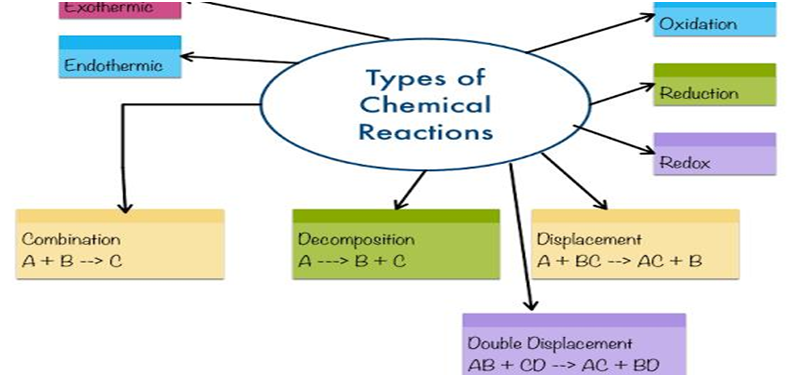
A. Combination or Synthesis Reactions:
The reactions in which two or more chemicals combine to generate a single new compound.
Types of Combination reactions:
I. Combination of two elements to form a compound
● Burning of hydrogen in air or oxygen to produce water.
H²(hydrogen) + O²( oxygen) → H²O(water) + O²( oxygen)
II. Combination Reactions involving an Element and a Compound
● Burning of carbon monoxide in oxygen to form carbon dioxide.
2CO (carbon monoxide) + O2(Oxygen) → 2CO2(Carbon dioxide)
III. Combination Reactions involving Two Compounds
● Combination of ammonia and hydrogen chloride to produce ammonium chloride.
NH³( Ammonia) + HCl(Hydrogen chloride) → NH⁴Cl³( Ammonium chloride)
B . Decomposition Reaction: Reactions in which one compound decomposes in two or more compounds or elements are known as Decomposition Reaction. A decomposition reaction is just the opposite of combination reaction.
A general decomposition reaction can be represented as follows :
AB → A + B
Examples:
When calcium carbonate is heated, it decomposes into calcium oxide and carbon dioxide.
CaCO3(s) heat−→− CaO(s) + CO2(g)
Calcium carbonate → Calcium oxide + Carbon dioxide
When ferric hydroxide is heated, it decomposes into ferric oxide and water
2Fe(OH)3(s) △→ Fe2O3(s) + 3H2O(l)
Thermal Decomposition: The decomposition of a substance on heating is known as Thermal Decomposition.
Example: 2Pb(NO3)2(s) heat−→− 2PbO(s) + 4NO2(g) + O2(g)
Electrolytic Decomposition: Reactions in which compounds decompose into simpler compounds because of passing of electricity, are known as Electrolytic Decomposition. This is also known as Electrolysis.
Example: When electricity is passed in water, it decomposes into hydrogen and oxygen.
2H2O(l) Undefined control sequence \xrightarrow 2H2(g) + O2(g)
Photolysis or Photo Decomposition Reaction: Reactions in which a compound decomposes because of sunlight are known as Photolysis or Photo Decomposition Reaction.
Example: When silver chloride is put in sunlight, it decomposes into silver metal and chlorine gas.
2AgCl(s) (white) Sunlight−→−−−−− 2Ag(s) (grey) + Cl2(g)
Photographic paper has a coat of silver chloride, which turns into grey when exposed to sunlight. It happens because silver chloride is colourless while silver is a grey metal.
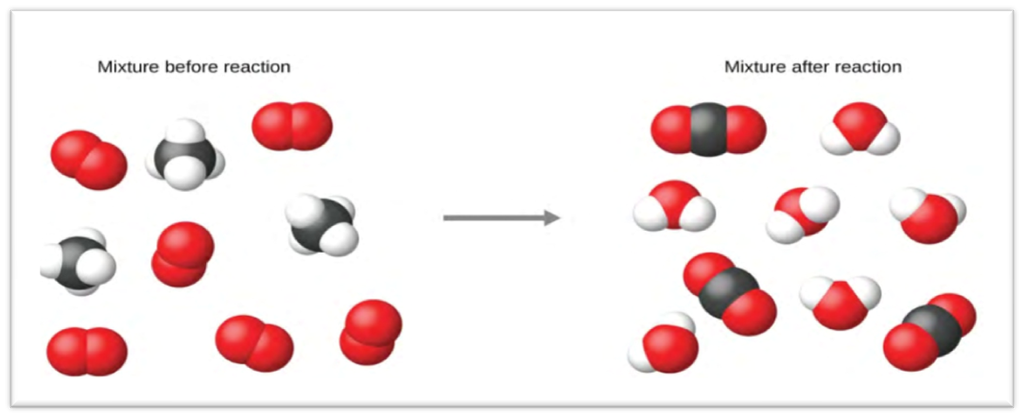
C. Displacement Reaction: The chemical reactions in which a more reactive element displaces a less reactive element from a compound is known as Displacement Reactions. Displacement reactions are also known as Substitution Reaction or Single Displacement/ replacement reactions.
A general displacement reaction can be represented by using a chemical equation as follows :
A + BC → AC + B
Displacement reaction takes place only when ‘A’ is more reactive than B. If ‘B’ is more reactive than ‘A’, then ‘A’ will not displace ‘C’ from ‘BC’ and reaction will not be taking place.
Examples:
When zinc reacts with hydrochloric acid, it gives hydrogen gas and zinc chloride.
Zn(s) + 2HCl(aq) → ZnCl2(aq) + H2(g)
When zinc reacts with copper sulphate, it forms zinc sulphate and copper metal.
Zn(s) + CuSO4(aq) → ZnSO4(aq) + Cu(s)
D. Double Displacement Reaction: Reactions in which ions are exchanged between two reactants forming new compounds are called Double Displacement Reactions.
AB + CD → AC + BD
Examples:
When the solution of barium chloride reacts with the solution of sodium sulphate, white precipitate of barium sulphate is formed along with sodium chloride.
BaCl2(aq) + Na2SO4(aq) → BaSO4(s) (Precipitate) + 2NaCl(aq)
When sodium hydroxide (a base) reacts with hydrochloric acid, sodium chloride and water are formed.
NaOH(aq) + HCl(aq) → NaCl(aq) + H2O(l)
Note: Double Displacement Reaction, in which precipitate is formed, is also known as precipitation reaction. Neutralisation reactions are also examples of double displacement reaction.
Precipitation Reaction: The reaction in which precipitate is formed by the mixing of the aqueous solution of two salts is called Precipitation Reaction.
Example:

Neutralization Reaction: The reaction in which an acid reacts with a base to form salt and water by an exchange of ions is called Neutralization Reaction.
Example:

E. Oxidation and Reduction Reactions:
Oxidation: Addition of oxygen or non-metallic element or removal of hydrogen or metallic element from a compound is known as Oxidation.
Elements or compounds in which oxygen or non-metallic element is added or hydrogen or metallic element is removed are called to be Oxidized.
Reduction: Addition of hydrogen or metallic element or removal of oxygen or non-metallic element from a compound is called Reduction.
The compound or element which goes under reduction in called to be Reduced.
Oxidation and Reduction take place together. For example
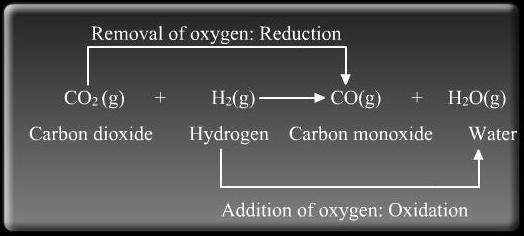
Oxidizing agent:
- The substance which gives oxygen for oxidation is called an Oxidizing agent.
- The substance which removes hydrogen is also called an Oxidizing agent.
Reducing agent:
- The substance which gives hydrogen for reduction is called a Reducing agent.
- The substance which removes oxygen is also called a Reducing agent.
The reaction in which oxidation and reduction both take place simultaneously is called Redox reaction.
When copper oxide is heated with hydrogen, then copper metal and hydrogen are formed.
CuO + H2 → Cu + H2O
(i) In this reaction, CuO is changing into Cu. Oxygen is being removed from copper oxide. Removal of oxygen from a substance is called Reduction, so copper oxide is being reduced to copper.
(ii) In this reaction, H2 is changing to H2O. Oxygen is being added to hydrogen. Addition of oxygen to a substance is called Oxidation, so hydrogen is being oxidised to water.
- The substance which gets oxidised is the reducing agent.
- The substance which gets reduced is the oxidizing agent
F. Exothermic and Endothermic Reactions:
Exothermic Reaction: Reaction which produces energy is called Exothermic Reaction. Most of the decomposition reactions are exothermic.
Example:
Respiration is a decomposition reaction in which energy is released.
![]()
When quick lime (CaO) is added to water, it releases energy.

Endothermic Reaction: A chemical reaction in which heat energy is absorbed is called Endothermic Reaction.
Example: Decomposition of calcium carbonate.

3. Effects of Oxidation Reactions in Everyday Life
- Books Name
- Chemistry Class 10 NCERT based
- Publication
- Grow Career Publication
- Course
- CBSE Class 10
- Subject
- Chemistry
Effects of Oxidation Reactions in Everyday life: Corrosion and Rancidity.
Corrosion: The process of slow conversion of metals into their undesirable compounds due to their reaction with oxygen, water, acids, gases etc. present in the atmosphere is called Corrosion.

Example: Rusting of iron.
Corrosion of Copper: Copper objects lose their lustre and shine after some time because the surface of these objects acquires a green coating of basic copper carbonate, CuCO3.Cu(OH)2 when exposed to air.
Corrosion of Silver Metal: The surface of silver metal gets tarnished (becomes dull) on exposure to air, due to the formation of a coating of black silver sulphide(Ag2S) on its surface by the action of H2S gas present in the air.


Rancidity: The taste and odour of food materials containing fat and oil changes when they are left exposed to air for a long time. This is called Rancidity. It is caused due to the oxidation of fat and oil present in food materials.
Methods to prevent rancidity:
By adding anti-oxidant.
Vacuum packing.
Replacing air by nitrogen.
Refrigeration of foodstuff.
A. Chemical Reaction: During the chemical reactions, the chemical composition of substances changes or make new substances are formed known as chemical reaction.
B. Chemical Equation: Chemical reactions can be written in chemical equation form which should always be balanced are know as chemical equation.
C. Types of Chemical Reactions:
Combination reaction: A single product is formed from two or more than two reactants.
2Mg + O2 → 2MgO
Decomposition reaction: A single reactant breaks down two or more then two products.
Thermal decomposition:
2Pb(NO2)2 → 2PbO + 4NO2 + O2
Electrolysis:
2H20 → 2H2 + O2
Photochemical reaction:
2AgBr → 2Ag + Br2
Displacement reaction: One element is displaced by another element.this format call di
Zn + CuSO4 → ZnSO4 + Cu
Double displacement reaction: Exchange of ions between reactants.
AgNO3 + NaCl → AgCl + NaNO3
Redox reaction: Both oxidation and reduction take place simultaneously.
CuO + H2 → Cu + H2O
Exothermic reaction: A chemical reaction in which heat energy is evolved.
C + O2 → CO2 (g) + heat
Endothermic reaction: A chemical reaction in which heat energy is absorbed.
ZnCO3 + Heat → ZnO + CO2
5. Reduction: Reaction that shows the loss of oxygen or gain of hydrogen.
ZnO + C → Zn + CO
ZnO is reduced to Zn—reduction. C is oxidized to CO—Oxidation.
Effects of Oxidation Reactions in Our Daily Life:
Corrosion: It is an undesirable change that occurs in metals when they are attacked by moisture, air, acids and bases.
Example, Corrosion (rusting) of Iron: Fe2O3. nH2O (Hydrated iron oxide)
Rancidity: Undesirable change that takes place in oil containing food items due to the oxidation of fatty acids.
Preventive methods of rancidity: Adding antioxidants to the food materials, storing food in the airtight container, flushing out air with nitrogen gas and refrigeration
1. The Chemical Properties of Acids and Bases
- Books Name
- Chemistry Class 10 NCERT based
- Publication
- Grow Career Publication
- Course
- CBSE Class 10
- Subject
- Chemistry
Indicators: Indicators are substances which indicate the acidic or basic nature of the solution by the colour change.
Types of Indicator: Some common types of indicators are:
1. Natural Indicators: Indicators obtained from natural sources are called Natural Indicators. Litmus, turmeric, red cabbage, China rose, etc., are some common natural indicators used widely to show the acidic or basic character of substances.
Turmeric: Turmeric is another natural indicator. Turmeric is yellow in colour. Turmeric solution or paper turns reddish brown with base. Turmeric does not change colour with acid.
Red Cabbage: The juice of red cabbage is originally purple in colour.
2. Olfactory Indicator: Substances which change their smell when mixed with acid or base are known as Olfactory Indicators. For example; Onion, vanilla etc.
Onion: Paste or juice of onion loses its smell when added with base. It does not change its smell with acid.
Vanilla: The smell of vanilla vanishes with base, but its smell does not vanish with an acid.
3. Synthetic Indicator: Indicators that are synthesized in the laboratory are known as Synthetic Indicators. For example; Phenolphthalein, methyl orange, etc.
Phenolphthalein is a colour less liquid. It remains colour less with acid but turns into pink with a base.
Methyl orange is originally orange in colour. It turns into the red with acid and turns into yellow with base.
Acids, Bases and Salts
Classification of matter
On the basis of
a) composition – elements, compounds and mixtures
b) state – solids, liquids and gases
c) solubility – suspensions, colloids and solutions
Types of mixtures – homogeneous and heterogeneous
Types of compounds – covalent and ionic
an Acid and a Base?
Ionisable and non-ionisable compounds
An ionisable compound when dissolved in water or in its molten state, dissociates into ions almost entirely. Example: NaCl, HCl, KOH, etc.
A non-ionisable compound does not dissociate into ions when dissolved in water or in its molten state. Example: glucose, acetone, etc.
Arrhenius theory of acids and bases
Acids: Acids are sour in taste, turn blue litmus red, and dissolve in water to release H+ ions.
Properties of Acids:
Acids have a sour taste.
Turns blue litmus red.
Acid solution conducts electricity.
Release H+ ions in aqueous solution.
Types of Acids: Acids are divided into two types on the basis of their occurrence i.e., Natural acids and Mineral acids.
(i) Natural Acids: Acids which are obtained from natural sources are called Natural Acids or Organic Acids.
Examples:
Methanoic acid (HCOOH)
Acetic acid (CH3COOH)
Oxalic acid (C2H2O4) etc.
(ii) Mineral Acids: Acids that are prepared from minerals are known as Mineral Acids Example; Inorganic acids, man-made acids or synthetic acid are also known as Mineral Acids.
Example:
Nitric acid (HNO3)
Carbonic acid (H2CO3)
Phosphoric acid (H3PO4) etc.
Chemical Properties of Acid:
(i) Reaction of acids with metal: Acids give hydrogen gas along with respective salt when they react with a metal.

Metal + Acid → Salt + Hydrogen
Test For Hydrogen Gas: The gas evolved after reaction of acid with metal can be tested by bringing a lighted candle near it. If the gas bums with a pop sound, then it confirms the evolution of hydrogen gas.
(ii) Reaction of acids with metal carbonate: Acids give carbon dioxide gas and respective salts along with water when they react with metal carbonates.
![]()
Metal carbonate + Acid → Salt + Carbon dioxide + Water

(iii) Reaction of acid with hydrogen carbonates (bicarbonates): Acids give carbon dioxide gas, respective salt and water when they react with metal hydrogen carbonate.

Example:
Test For Evolution of Carbon Dioxide Gas: Carbon dioxide turns lime water milky when passed through it. This is the characteristic test for carbon dioxide gas.

The gas evolved because of reaction of the acid with metal carbonate or metal hydrogen carbonate turns lime water milky. This shows that the gas is carbon dioxide gas.
Acids
- Strong Acids
An acid which is completely ionised in water and produces (H+) is called Strong Acid.
Examples: Hydrochloric acid (HCl), Sulphuric acid (H2SO4), Nitric acid (HNO3)
- Weak Acids
An acid which is partially ionised in water and thus produces a small amount of hydrogen ions (H+) is called a Weak Acid.
Example: Acetic acid (CH3COOH), Carbonic acid (H2CO3) , When a concentrated solution of acid is diluted by mixing water, then the concentration of Hydrogen ions (H+) or hydronium ion (H3O–) per unit volume decreases.
Bases: Bases are bitter in taste, have soapy touch, turn red litmus blue and give hydroxide ions (OH–) in aqueous solution.
Examples: Sodium hydroxide (caustic soda) – NaOH
Calcium hydroxide – Ca(OH)2
Potassium hydroxide (caustic potash) – (KOH)
Properties of Bases:
1.Have a bitter taste.
2.Turns red litmus blue.
3.Conducts electricity in solution.
4.Release OH– ions in Aqueous Solution
Types of bases: Bases can be divided in two types – Water soluble and Water-insoluble.
The hydroxide of alkali and alkaline earth metals are soluble in water. These are also known as alkali.
For example; sodium hydroxide, magnesium hydroxide, calcium hydroxide, etc.
Chemical properties of bases:
(i) Reaction of Base with Metals: When alkali (base) reacts with metal, it produces salt and hydrogen gas.
Alkali + Metal → Salt + Hydrogen
(ii) Reaction of Base with Oxides of Non-metals: Non-metal oxides are acidic in nature. For example; carbon dioxide is a non-metal oxide. When carbon dioxide is dissolved in water it produces carbonic acid.
Therefore, when a base reacts with non-metal oxide, both neutralize each other resulting respective salt and water.
![]()
Base + Non-metal oxide → Salt + Water
(iii) Neutralisation Reaction: An acid neutralizes a base when they react with each other and respective salt and water are formed.
![]()
Acid + Base → Salt + Water
(iv) Reaction of Acid with Metal Oxides: Metal oxides are basic in nature. Thus, when an acid reacts with a metal oxide both neutralize each other. In this reaction, the respective salt and water are formed.
![]()
Acid + Metal Oxide → Salt + Water
Common in all bases: A base dissociates hydroxide ion in water, which is responsible for the basic behaviour of a compound.

Example: When sodium hydroxide is dissolved in water, it dissociates hydroxide ion and sodium ion.

Neutralisation Reaction: When an acid reacts with a base, the hydrogen ion of acid combines with the hydroxide ion of base and forms water
Dilution of Acid and Base: The hydrogen ion in an acid and hydroxide ion in a base, per unit volume, shows the concentration of acid or base.By mixing of acid to water, the concentration of hydrogen ion per unit volume decreases. Similarly, by addition of base to water, the concentration of hydroxide ion per unit volume decreases. This process of addition of acid or base to water is called Dilution and the acid or base is called Diluted.The dilution of acid or base is exothermic. Thus, acid or base is always added to water and water is never added to acid or base. If water is added to a concentrated acid or base, a lot of heat is generated, which may cause splashing out of acid or base and may cause severe damage as concentrated acid and base are highly corrosive
Examples
Acids
1.Hydrochloric acid (HCl)
2.Sulphuric acid (H2SO4)
3.Nitric acid (HNO3)
Bases
1.Sodium hydroxide (NaOH)
2.Potassium hydroxide (KOH)
3.Calcium hydroxide (Ca(OH)2)
Bronsted Lowry theory
1.A Bronsted acid is an H+ (aq) ion donor.
2.A Bronsted base is an H+ (aq) ion acceptor.
Example
In the reaction: HCl (aq) + NH3 (aq) → NH+4(aq) + Cl− (aq)
HCl – Bronsted acid and Cl− : its conjugate acid
NH3 – Bronsted base and NH+4 : its conjugate acid
Physical test
Given are two possible physical tests to identify an acid or a base.
a. Taste
An acid tastes sour whereas a base tastes bitter.
The method of taste is not advised as an acid or a base could be contaminated or corrosive.
b. Effect on indicators by acids and bases
An indicator is a chemical substance which shows a change in its physical properties, mainly colour or odour when brought in contact with an acid or a base.
Below mentioned are commonly used indicators and the different colours they exhibit:
a) Litmus
In a neutral solution – purple
In acidic solution – red
In basic solution – blue
b) Methyl orange
In a neutral solution – orange
In acidic solution – red
In basic solution – yellow
c) Phenolphthalein
In a neutral solution – colorless
In acidic solution – remains colorless
In basic solution – pink
Acid-Base Reactions & Reactions of acids and bases
a) Reaction of acids and bases with metals
Acid + active metal → salt + hydrogen + heat
2HCl + Mg → MgCl2 + H2 (↑)
2NaOH + Zn → Na2ZnO2 + H2 (↑)
b) Reaction of acids with metal carbonates and bicarbonates
Acid + metal carbonate or bicarbonate → salt + water + carbon dioxide.
2HCl + CaCO3 → CaCl2 + H2O + CO2
H2SO4 + Mg (HCO3)2 → MgSO4 + 2H2O + 2CO2
c) Neutralisation reaction
1. Reaction of metal oxides and hydroxides with acids
Metal oxides or metal hydroxides are basic in nature.
Acid + base → salt + water + heat
H2SO4 + MgO → MgSO4 + H2O
2HCl + Mg (OH) 2 → MgCl2 + 2H2O
2. Reaction of non-metal oxides with bases
Non-metal oxides are acidic in nature
Base + Nonmetal oxide → salt + water + heat
2NaOH + CO2→ Na2CO3 + H2O
Base:
Bases undergo neutralisation reaction with acids.
They are comprised of metal oxides, metal hydroxides, metal carbonates and metal bicarbonates.
Most of them are insoluble in water.
1. Physical Properties of Metals and Non-Metals
- Books Name
- Chemistry Class 10 NCERT based
- Publication
- Grow Career Publication
- Course
- CBSE Class 10
- Subject
- Chemistry
Metals: Physical properties of metals, chemical properties of metals and non-metal oxide.
Metals are the elements that conduct heat and electricity and are malleable and ductile. Examples are Iron (Fe), Aluminium (Al), Silver (Ag), Copper (Cu), Gold (Au), Platinum (Pt), Lead (Pb), Potassium (K), Sodium (Na), Calcium (Ca) and Magnesium (Mg) etc.
Metals are the elements which form positive ions by losing electrons. Thus, metals are known as Electropositive Elements.
How Do Metals and Nonmetals React
Metals lose valence electron(s) and form cations.
Non-metals gain those electrons in their valence shell and form anions.
The cation and the anion are attracted to each other by strong electrostatic force, thus forming an ionic bond.
For example: In calcium chloride, the ionic bond is formed by opposite charged calcium and chloride ions.
Calcium atom loses 2 electrons and attains the electronic configuration of the nearest noble gas (Ar). By doing so, it gains a net charge of +2.
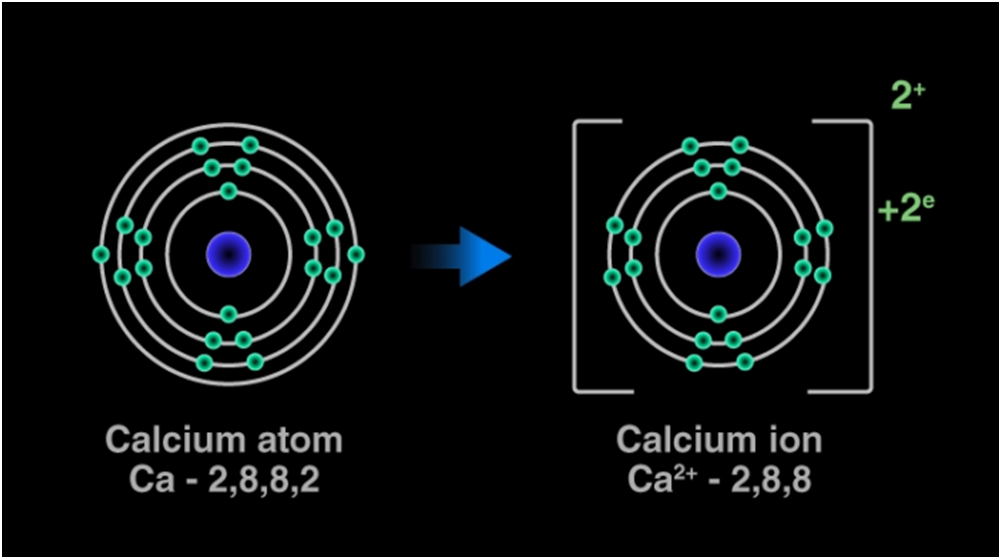
The two Chlorine atoms take one electron each, thus gaining a charge of -1 (each) and attain the electronic configuration of the nearest noble gas (Ar).
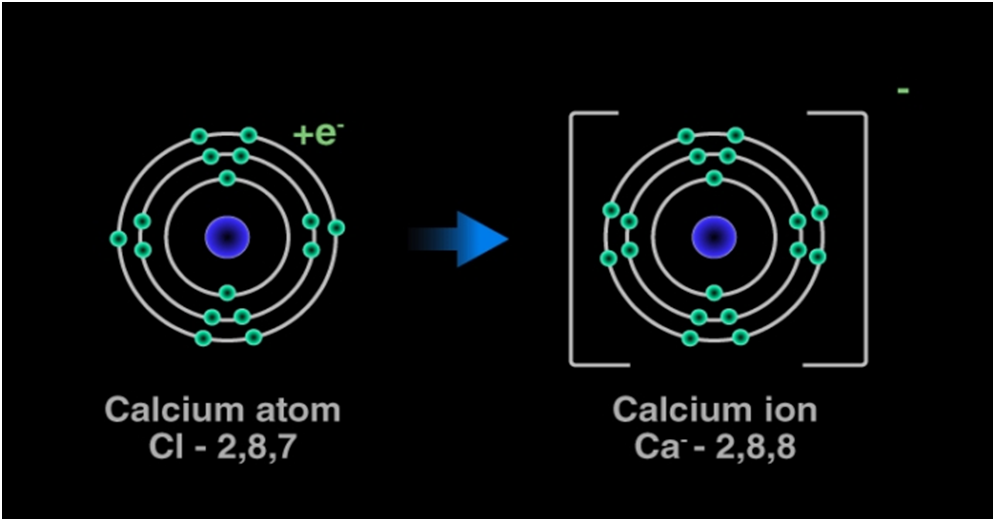
Physical Properties of Metals
- Hardness: Most of the metals are hard, except alkali metals, such as sodium, potassium, lithium, etc. are very soft metals. These can be cut by using a knife.
- Conduction: Metals are a good conductor of heat and electricity. This is the cause that electric wires are made of metals like copper and aluminium.
- Melting and Boiling Point: :Metals have generally high melting and boiling points. (Except sodium and potassium metals which have low melting and boiling point.)
- Strength: Most of the metals are strong and have high tensile strength. Because of this, big structures are made using metals, such as copper (Cu) and iron (Fe). (Except Sodium (Na) and potassium (K) which are soft metals).
- State: Metals are solid at room temperature except for mercury (Hg).
- Malleability: Metals are malleable. This means metals can be beaten into a thin sheet. Because of this property, iron is used in making big ships.
- Ductility: Metals are ductile. This means metals can be drawn into thin wire. Because of this property, a wire is made of metals.
- Density: Most of the metals have a high density.
- Colour: Most of the metals are grey in colour. But gold and copper are exceptions.
Non-Metals: Physical Properties of non-metals, chemical properties of non-metals, non¬metal oxides, Reaction of metal and Non-metal, Ionic bonds and formation of an ionic bond. Non-metals are the elements that do not conduct electricity and are neither malleable nor ductile.
Examples: Carbon (C), Sulphur (S), Phosphorous (P), Silicon (Si), Hydrogen (H), Oxygen (O), Nitrogen (N), Chlorine (Cl), Bromine (Br), Neon (Ne) and Argon (Ar) etc.
Non-metals are the elements which form negative ions by gaining an electron. Thus, non¬metals are also known as Electronegative Elements.
Physical properties of non-metals
- Hardness: Non-metals are not hard rather they are generally soft. But the diamond is an exception; it is the hardest naturally occurring substance.
- State: Non-metals may be solid, liquid or gas.
- Lustre: Non-metals have a dull appearance. Diamond and iodine are exceptions.
- Sonority: Non-metals are not sonorous, i.e., they do not produce a typical sound on being hit.
- Conduction: Non-metals are a bad conductor of heat and electricity. Graphite which is allotrope of carbon is a good conductor of electricity and is an exception.
- Malleability and ductility: Non-metals are brittle.
- Melting and boiling point: Non-metals have generally low melting and boiling points.
- Density: Most of the non-metals have low density.
- Colour: Non-metals are in many colours.
Carbon in the form of graphite is non-metal which conduct electricity.
Iodine is non-metal which is lustrous having a shining surface.
Carbon in the form of diamond is a non-metal which is extremely hard.
Diamond is a non-metal which has a very high melting point and boiling point.
1. Bonding in Carbon
- Books Name
- Chemistry Class 10 NCERT based
- Publication
- Grow Career Publication
- Course
- CBSE Class 10
- Subject
- Chemistry
Bonding in Carbon: The Covalent bond, Electron dot structure, Physical properties of organic compounds, Allotropes of Carbon.
Hard Water
Hard water contains salts of calcium and magnesium, principally as bicarbonates, chlorides, and sulphates. When soap is added to hard water, calcium and magnesium ions of hard water react with soap forming insoluble curdy white precipitates of calcium and magnesium salts of fatty acids.
2C17H35COONa+MgCl2 → (C17H35COO)2Mg+2NaCl
2C17H35COONa+CaCl2 → (C17H35COO)2Ca+2NaCl
These precipitates stick to the fabric being washed and hence, interfere with the cleaning ability of the soap. Therefore, a lot of soap is wasted if the water is hard.
Covalent Bonds
Difficulty of Carbon to Form a Stable Ion
To achieve the electronic configuration of the nearest noble gas, He, if the carbon atom loses four of its valence electrons, a huge amount of energy is involved. C4+ ion hence formed will be highly unstable due to the presence of six protons and two electrons.
If the carbon atom gains four electrons to achieve the nearest electronic configuration of the noble gas, Ne, C4− ion will be formed. But again, a huge amount of energy is required. Moreover, in C4+ ion it is difficult for 6 protons to hold 10 electrons. Hence, to satisfy its tetravalency, carbon shares all four of its valence electrons and forms covalent bonds.
Ionic Bond
Ionic bonding involves the transfer of valence electron/s, primarily between a metal and a nonmetal. The electrostatic attractions between the oppositely charged ions hold the compound together.
Ionic compounds:
Are usually crystalline solids (made of ions)
Have high melting and boiling points
Conduct electricity when melted
Are mostly soluble in water and polar solvents
Covalent Bond
A covalent bond is formed when pairs of electrons are shared between two atoms. It is primarily formed between two same nonmetallic atoms or between nonmetallic atoms with similar electronegativity.
Lewis Dot Structure
Lewis structures are also known as Lewis dot structures or electron dot structures.
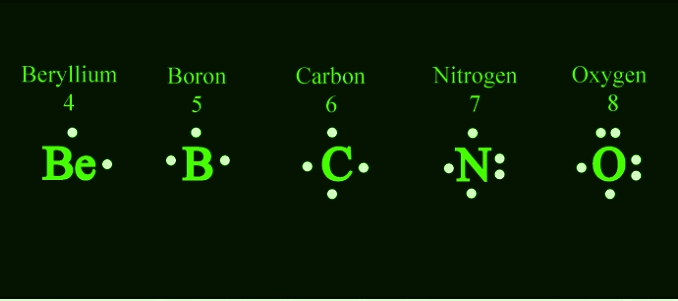
These are basically diagrams with the element’s symbol in the centre. The dots around it represent the valence electrons of the element.
Lewis structures of elements with atomic number 5-8
Covalent Bonding in H2, N2 and O2
Formation of a single bond in a hydrogen molecule:
Each hydrogen atom has a single electron in the valence shell. It requires one more to acquire the nearest noble gas configuration (He).

Therefore, both the atoms share one electron each and form a single bond.
Formation of a double bond in an oxygen molecule:
Each oxygen atom has six electrons in the valence shell (2, 6). It requires two electrons to acquire the nearest noble gas configuration (Ne).

Therefore, both the atoms share two electrons each and form a double bond.
Formation of a triple bond in a nitrogen molecule:
Each nitrogen atom has five electrons in the valence shell (2, 5). It requires three electrons to acquire the nearest noble gas configuration (Ne).

Therefore, both atoms share three electrons each and form a triple bond.
Single, Double and Triple Bonds and Their Strengths
A single bond is formed between two atoms when two electrons are shared between them
A double bond is formed between two atoms when four electrons are shared between them, i.e., one pair of electrons from each participating atom. It is depicted by double lines between the two atoms.
A triple bond is formed between two atoms when six electrons are shared between them, i.e., two pairs of electrons from each participating atom. It is depicted by triple lines between the two atoms.
Bond strength:
The bond strength of a bond is determined by the amount of energy required to break a bond.
This is to signify that the energy required to break three bonds is higher than that for two bonds or a single bond.
Bond length:
Bond length is determined by the distance between nuclei of the two atoms in a bond.
The order of bond length for multiple bonds is: Triple bond<double bond<single bond
The distance between the nuclei of two atoms is least when they are triple bonded.
Covalent Bonding of N, O with H and Polarity

In ammonia (NH3), the three hydrogen atoms share one electron each with the nitrogen atom and form three covalent bonds.
1.Ammonia has one lone pair.
2.This causes the N atom to acquire a slight negative charge and H atom a slight positive charge
3.All three N-H covalent bonds are polar in nature.N atom is more electronegative than

the H atom. Thus, the shared pair of electrons lies more towards N atom.
In water (H2O), the two hydrogen atoms share one electron each with the oxygen atom and form two covalent bonds.

Covalent Bonding in Carbon
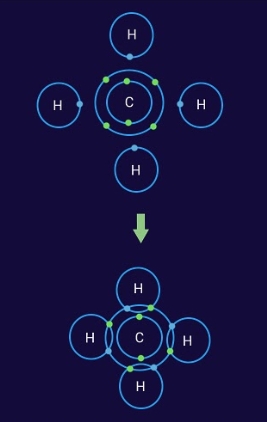
A methane molecule (CH4) is formed when four electrons of carbon are shared with four hydrogen atoms as shown below.
Diamond
Diamond has a regular tetrahedral geometry. This is because each carbon is connected to four neighbouring carbon atoms via single covalent bonds, resulting in a single unit of a crystal. These crystal units lie in different planes and are connected to each other, resulting in a rigid three-dimensional cubic pattern of the diamond.
Diamond:
1.Has a high density of 3.5g/cc.
2.Has a very high refractive index of 2.5.
3.Is a good conductor of heat.
4.Is a poor conductor of electricity.
Graphite
In graphite, each carbon atom is bonded covalently to three other carbon atoms, leaving each carbon atom with one free valency. This arrangement results in hexagonal rings in a single plane and such rings are stacked over each other through weak Van der Waals forces.
Graphite:
1.Has a density of 2.25 g/cc.
2.Has a soft and slippery feel.
3.Is a good conductor of electricity.
C60
C60, also known as Buckminsterfullerene, is the very popular and stable form of the known fullerenes. It is the most common naturally occurring fullerene and can be found in small quantities in soot. It consists of 60 carbon atoms arranged in 12 pentagons and 20 hexagons, like in a soccer ball.
1. Early Classification of Elements
- Books Name
- Chemistry Class 10 NCERT based
- Publication
- Grow Career Publication
- Course
- CBSE Class 10
- Subject
- Chemistry
Dobereiner’s Triads
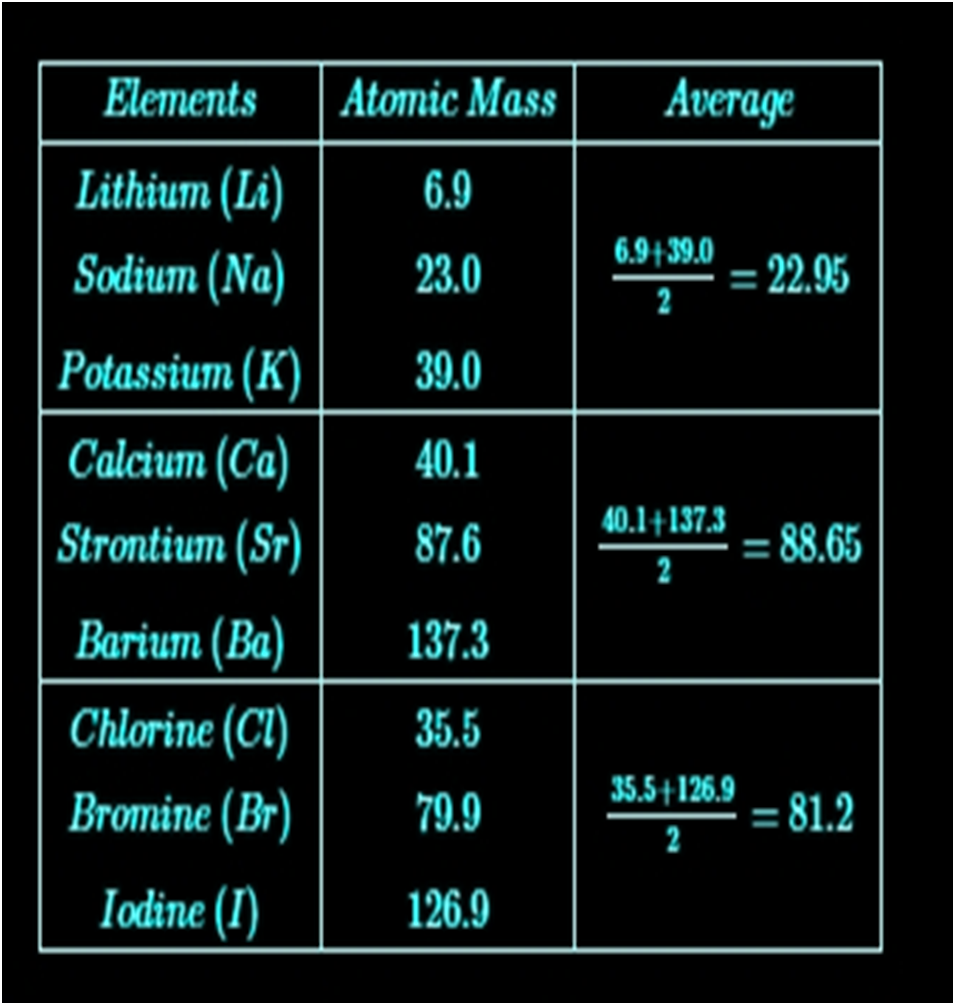
Dobereiner arranged a group of three elements with similar properties in the order of increasing atomic masses and called it a triad. He showed that the atomic mass of the middle element is approximately the arithmetic mean of the other two. But, Dobereiner could identify only the following three triads from the elements known at that time.
Newlands’ Law of Octaves
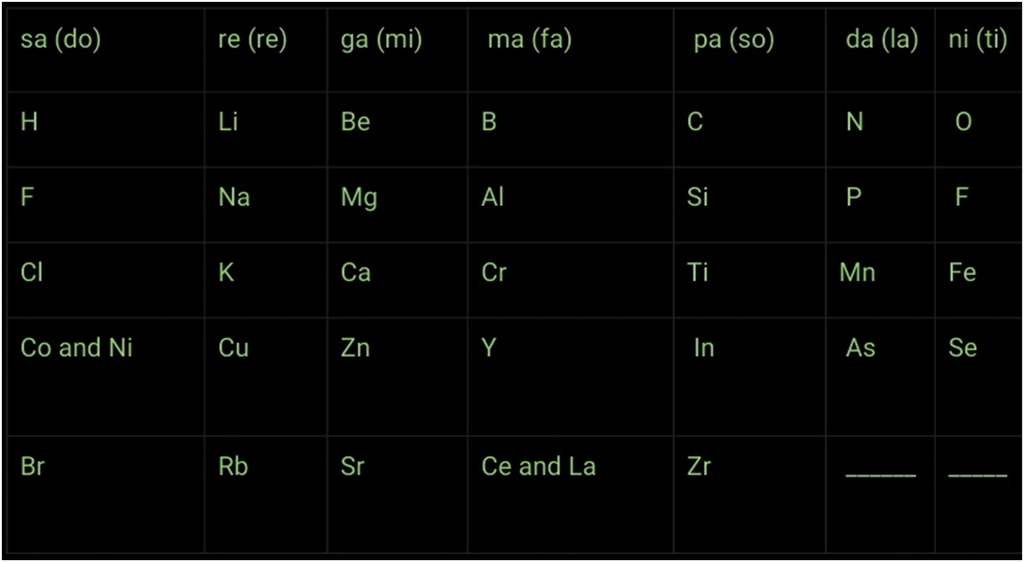
Assumptions and Limitations:
1. The law was applicable for elements with atomic masses up to 40.
2. Properties of new elements discovered did not fit into the law of octaves.
3. In a few cases, Newlands placed two elements in the same slot to fit elements in the table.
4. He also grouped unlike elements under the same slot.
2. Common Things in All Acids and Bases
- Books Name
- Chemistry Class 10 NCERT based
- Publication
- Grow Career Publication
- Course
- CBSE Class 10
- Subject
- Chemistry
Hydronium ion
Hydronium ion is formed when a hydrogen ion accepts a lone pair of electrons from the oxygen atom of a water molecule, forming a coordinate covalent bond.
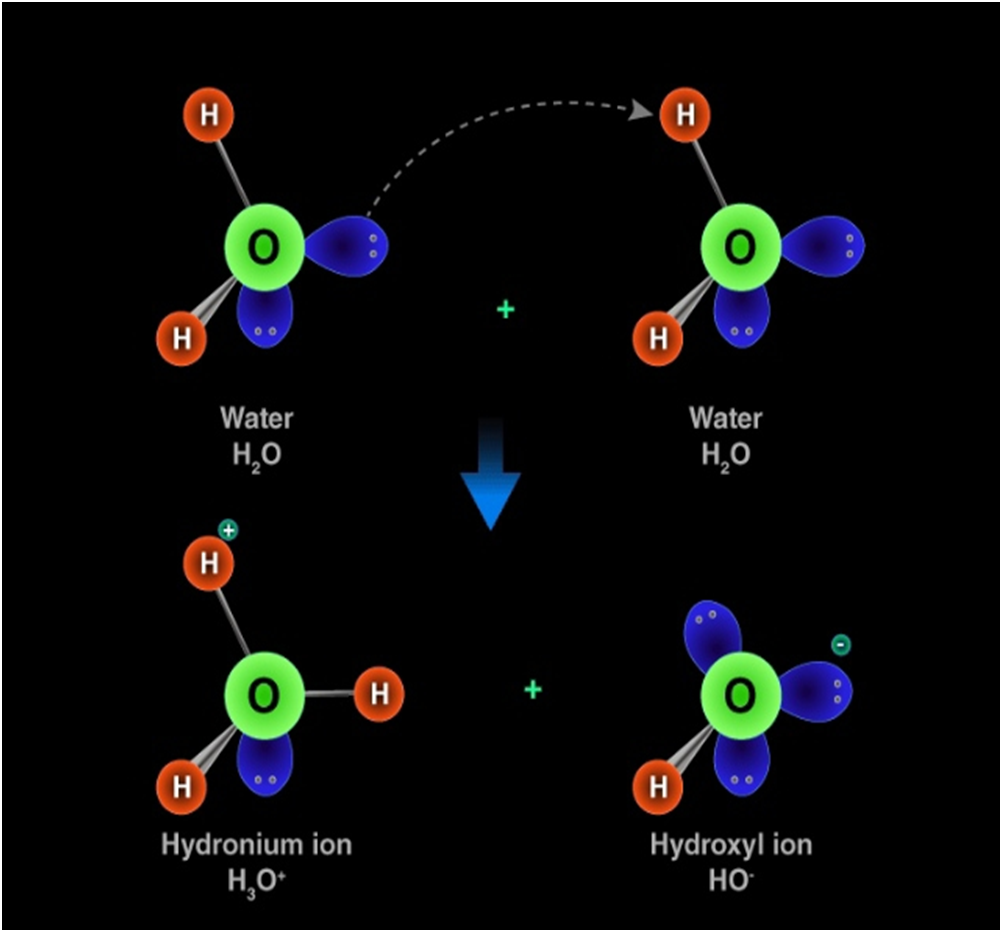
Dilution
Dilution is the process of reducing the concentration of a solution by adding more solvent (usually water) to it.
It is a highly exothermic process. Strong acid or base: When all molecules of a given amount of an acid or a base dissociate completely in water to furnish their respective ions, H+(aq) for acid and OH−(aq) for base).
Weak acid or base: When only a few of the molecules of a given amount of an acid or a base dissociate in water to furnish their respective ions, H+(aq) for acid and OH−(aq) for base).
Dilute acid: contains less number of H+(aq) ions per unit volume.
Concentrated acid: contains more number of H+(aq) ions per unit volume
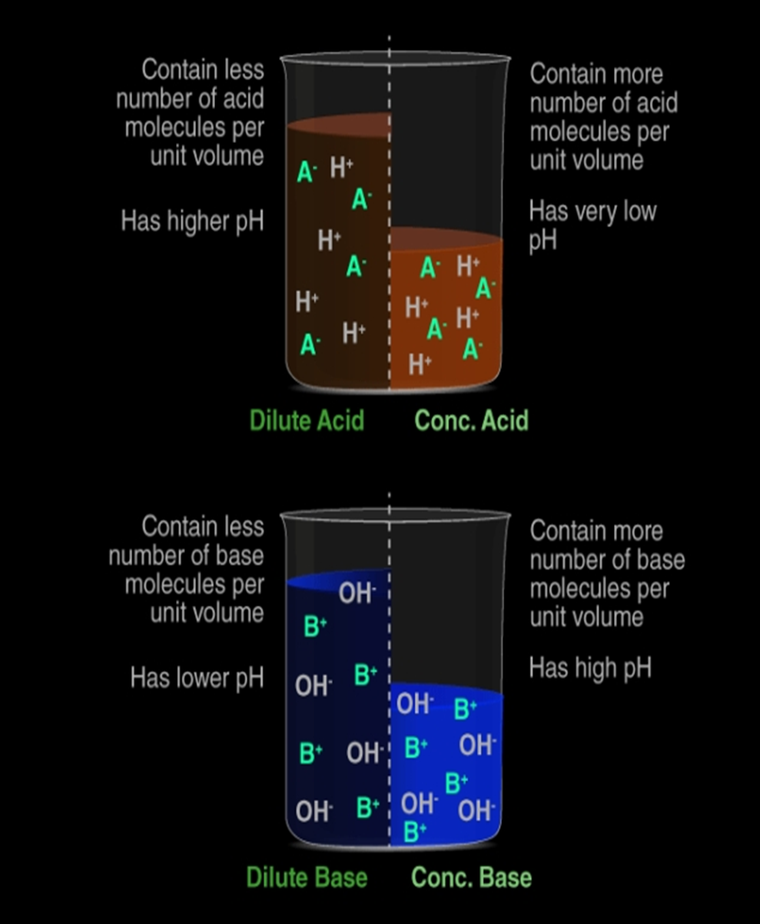
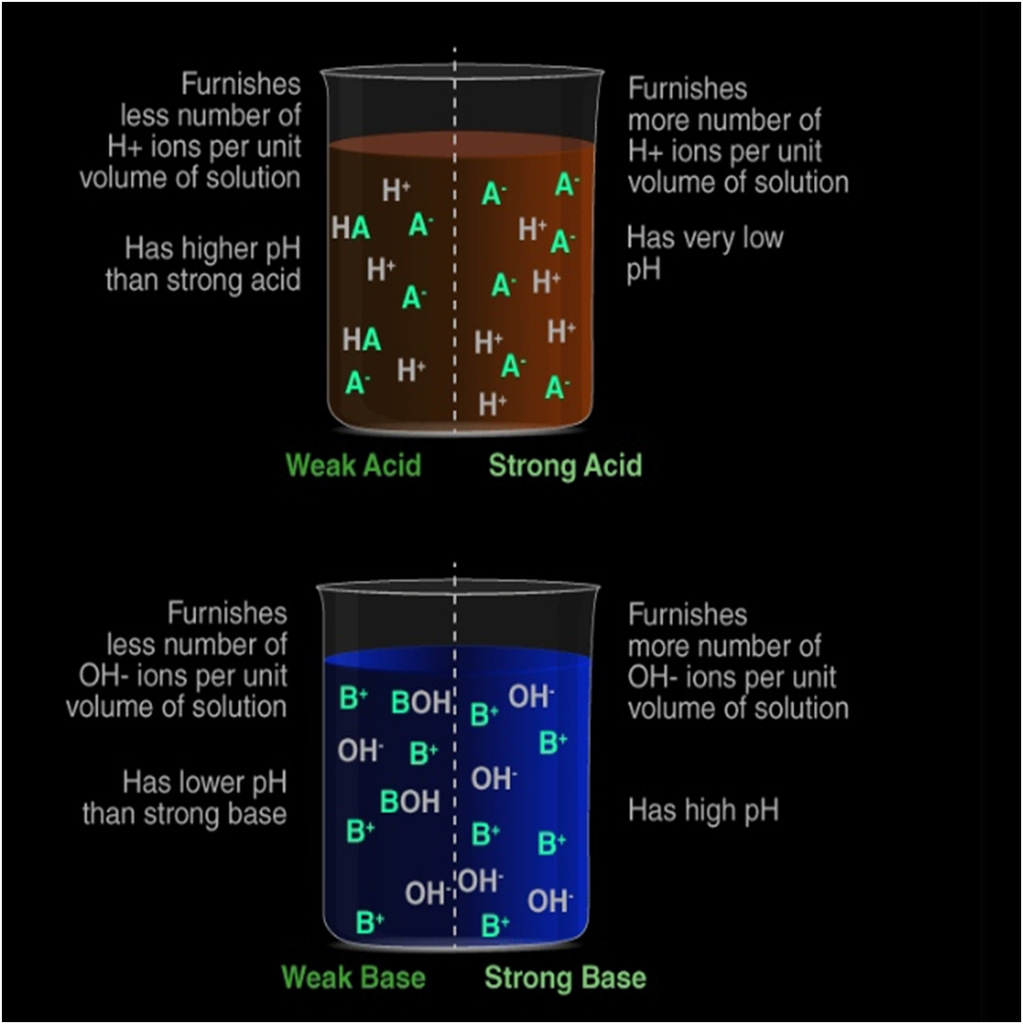
3. Strongness about Acids or Bases
- Books Name
- Chemistry Class 10 NCERT based
- Publication
- Grow Career Publication
- Course
- CBSE Class 10
- Subject
- Chemistry
Universal indicator
A universal indicator has a pH range from 0 to 14 that indicates the acidity or alkalinity of a solution.
A neutral solution has pH=7
pH
pH=−log10[H+]
In pure water, [H+]=[OH−]=10−7 mol/L. Hence, the pH of pure water is 7.
The pH scale ranges from 0 to 14.
If pH < 7 → acidic solution
If pH > 7→ basic solution
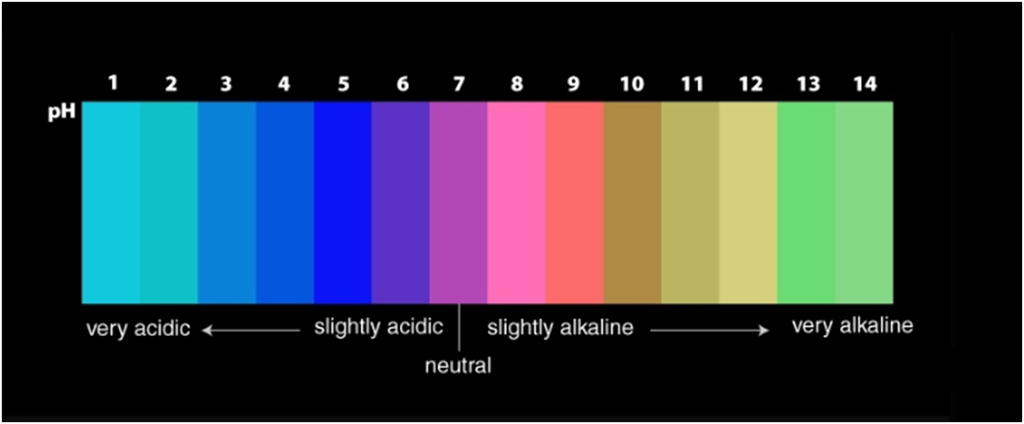
Importance of pH in everyday life
1. pH sensitivity of plants and animals
Plants and animals are sensitive to pH. Crucial life processes such as digestion of food, functions of enzymes and hormones happen at a certain pH value.
2. pH of a soil
The pH of a soil optimal for the growth of plants or crops is 6.5 to 7.0.
3. pH in the digestive system
The process of digestion happens at a specific pH in our stomach which is 1.5 to 4.
The pH of the interaction of enzymes, while food is being digested, is influenced by HCl in our stomach.
4. pH in tooth decay
Tooth decay happens when the teeth are exposed to an acidic environment of pH 5.5 and below.
5. pH of self-defence by animals and plants
Acidic substances are used by animals and plants as a self-defence mechanism. For example, bee and plants like nettle secrete a highly acidic substance for self-defence. These secreted acidic substances have a specific pH.
4. About Salts
- Books Name
- Chemistry Class 10 NCERT based
- Publication
- Grow Career Publication
- Course
- CBSE Class 10
- Subject
- Chemistry
Salts
A salt is a combination of an anion of an acid and a cation of a base.
Examples – KCl, NaNO3 ,CaSO4, etc.
Salts are usually prepared by the neutralisation reaction of an acid and a base.
Common salt
Sodium Chloride (NaCl) is referred to as common salt because it’s used all over the world for cooking. Sodium chloride (NaCl) is also known as Common or Table Salt. It is formed after the reaction between sodium hydroxide and hydrochloric acid. It is a neutral salt. The pH value of sodium chloride is about 7. Sodium chloride is used to enhance the taste of food. Sodium chloride is used in the manufacturing of many chemicals.
Family of salts
Salts having the same cation or anion belong to the same family. For example, NaCl, KCl, LiCl.
pH of salts
A salt of a strong acid and a strong base will be neutral in nature. pH = 7 (approx.).
A salt of a weak acid and a strong base will be basic in nature. pH > 7.
A salt of a strong acid and a weak base will be acidic in nature. pH < 7.
The pH of a salt of a weak acid and a weak base is determined by conducting a pH test.
Preparation of Sodium hydroxide
Chemical formula – NaOH
Also known as – caustic soda
Preparation (Chlor-alkali process):
Electrolysis of brine (solution of common salt, NaCl) is carried out.
At anode: Cl2 is released
At cathode: H2 is released
Sodium hydroxide remains in the solution.
Bleaching powder
Chemical formula – Ca(OCl)Cl or CaOCl2
Preparation – Ca(OH)2(aq)+Cl2(g)→CaOCl2(aq)+H2O(l)
On interaction with water – bleaching powder releases chlorine which is responsible for bleaching action.
Baking soda
Chemical name – Sodium hydrogen carbonate
Chemical formula – NaHCO3
Preparation (Solvay process):
a. Limestone is heated: CaCO3→CaO+CO2
b. CO2 is passed through a concentrated solution of sodium chloride and ammonia:
NaCl(aq)+NH3(g)+CO2(g)+H2O(l)→NaHCO3(aq)+NH4Cl(aq)
Uses:
1. Textile industry
2. Paper industry
3. Disinfectant
Washing soda
Chemical name – Sodium hydrogen carbonate
Chemical formula – NaHCO3
Preparation (Solvay process) –
a. Limestone is heated: CaCO3 → CaO + CO2
b. CO2 is passed through a concentrated solution of sodium chloride and ammonia:
NaCl(aq) + NH3(g) + CO2(g) + H2O(l) → NaHCO3(aq) + NH4Cl(aq)
Uses
1. In glass, soap and paper industries
2. Softening of water
3. Domestic cleaner
Crystals of salts
Certain salts form crystals by combining with a definite proportion of water. The water that combines with the salt is called water of crystallisation.
Plaster of paris
Gypsum, CaSO4.2H2O (s) on heating at 100°C (373K) gives CaSO4. ½ H2O and 3/2 H2O
CaSO4. ½ H2O is plaster of paris.
CaSO4. ½ H2O means two formula units of CaSO4 share one molecule of water.
Uses – cast for healing fractures.
2. Chemical Properties of Metals
- Books Name
- Chemistry Class 10 NCERT based
- Publication
- Grow Career Publication
- Course
- CBSE Class 10
- Subject
- Chemistry
Chemical Properties of Metals
1. Reaction with oxygen: Most of the metals form respective metal oxides when reacting with oxygen.
Metal + Oxygen → Metal Oxide
Examples:
Reaction of Potassium with Oxygen: Potassium metal forms potassium oxide when reacts with oxygen.

Reaction of Sodium with Oxygen: Sodium metal forms sodium oxide when reacts with oxygen.

Reaction of Copper metal with Oxygen: Copper does not react with oxygen at room temperature but when burnt in air, it gives oxide.

Silver, gold and platinum do not combine with the oxygen of air even at high temperature. They are the least reactive.
2. Reaction of metals with water: Metals form respective hydroxide and hydrogen gas when reacting with water.
![]()
Metal + Water → Metal hydroxide + Hydrogen
Reaction of Sodium metal with Water: Sodium metal forms sodium hydroxide and liberates hydrogen gas along with lot of heat when reacting with water.

Reaction of Iron with Water: Reaction of iron with cold water is very slow and comes into notice after a long time. Iron forms rust (iron oxide) when reacts with moisture present in the atmosphere. Iron oxide and hydrogen gas are formed by passing of steam over iron metal.
3. Reaction of metals with dilute acid: Metals form respective salts when reacting with dilute acid. Reaction of Sodium metal with dilute hydrochloric acid: Sodium metal gives sodium chloride and hydrogen gas when react with dilute hydrochloric acid.
![]()
![]()
Hydrogen gas is not when metal is treated with nitric acid (HNO3):
Nitric acid is strong oxidising agent and it oxidises the hydrogen gas (H2) liberated into water (H2O) and itself get reduced to some oxide of nitrogen like nitrous oxide (N2O)3 nitric oxide (NO) and nitrogen dioxide (NO2).
Copper, gold, silver are known as noble metals. These do not react with water or dilute acids.
The order of reactivity of metal towards dilute hydrochloric acid or sulphuric acid is in the order;
K > Na > Ca > Mg > Al > Zn > Fe > Cu > Hg > Ag
Metal Oxides
Chemical Properties: Metal oxides are basic in nature. The aqueous solution of metal oxides turns red litmus blue.
Reaction of Metal oxides with Water: Most of the metal oxides are insoluble in water. Alkali metal oxides are soluble in water. Alkali metal oxides give strong base when dissolved in water.

Reaction of Sodium oxide with Water: Sodium oxide gives sodium hydroxide when reacts with water.
Reaction of Zinc oxide and Aluminium oxide: Aluminum oxide and zinc oxide are insoluble in water. Aluminium oxide and zinc oxide are amphoteric in nature. An amphoteric substance shows both acidic and basic characters. It reacts with base like acid and reacts with an acid like a base.

When zinc oxide reacts with sodium hydroxide, it behaves like an acid. In this reaction, sodium zincate and water are formed
Reactivity Series of Metals: The order of intensity or reactivity of metal is known as Reactivity Series. Reactivity of elements decreases on moving from top to bottom in the given reactivity series. In the reactivity series, copper, gold, and silver are at the bottom and hence, least reactive. These metals are known as Noble metals.
Reactivity of some metals are given in descending order :
K > Na > Ca > Mg > Al > Zn > Fe > Pb > Cu
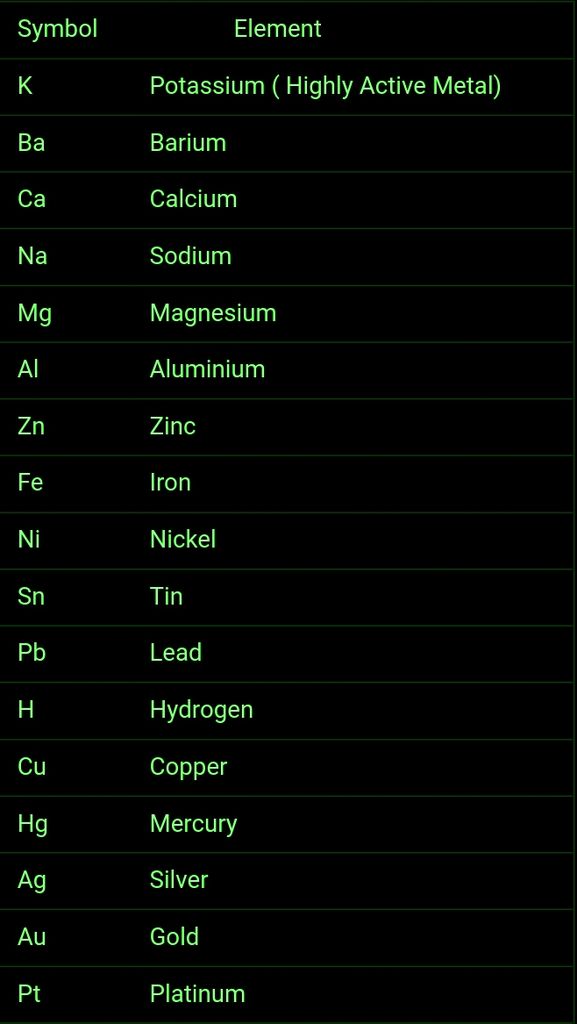
3. Metals and Non-Metals Reactions
- Books Name
- Chemistry Class 10 NCERT based
- Publication
- Grow Career Publication
- Course
- CBSE Class 10
- Subject
- Chemistry
Ionic Compounds
The electrostatic attractions between the opposite charged ions hold the compound together.
Example: MgCl2, CaO, MgO, NaCl etc.
Properties of Ionic Compound
Ionic compounds
- Are usually crystalline solids (made of ions).
- Have high melting and boiling points.
- Conduct electricity when in aqueous solution and when melted.
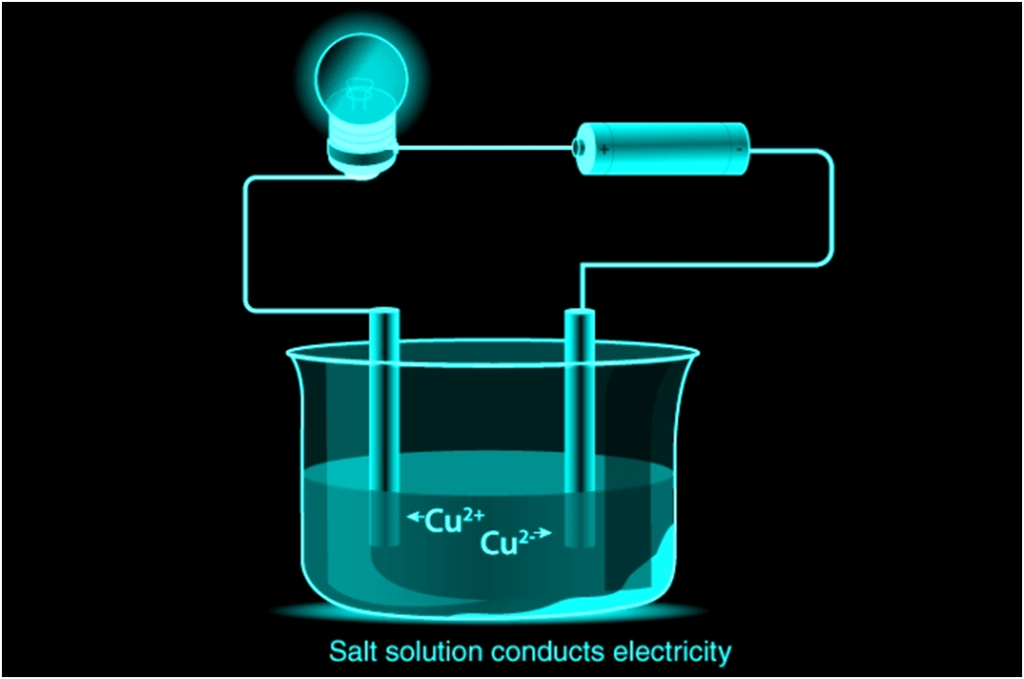
Physical Nature
Ionic solids usually exist in regular, well-defined crystal structures.
Electric Conduction of Ionic Compounds
Ionic compounds conduct electricity in the molten or aqueous state when ions become free and act as charge carriers.
In solid form, ions are strongly held by electrostatic forces of attractions and are not free to move; hence do not conduct electricity.
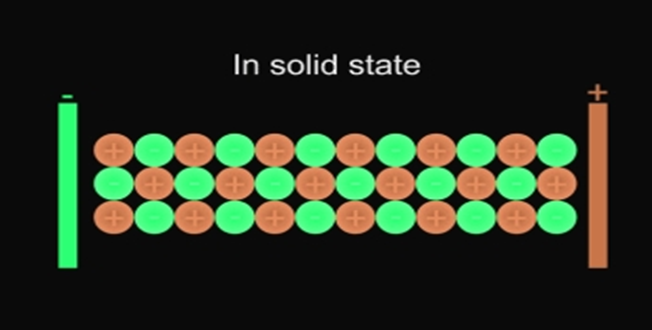
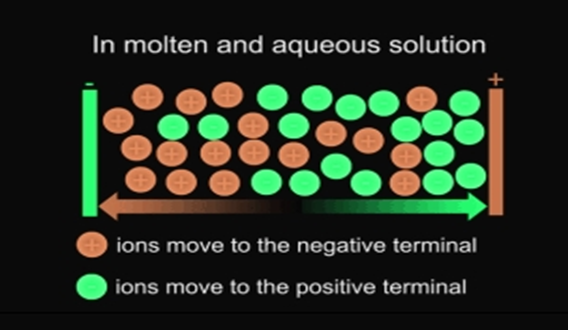
For example, ionic compounds such as NaCl does not conduct electricity when solid but when dissolved in water or in a molten state, it will conduct electricity.
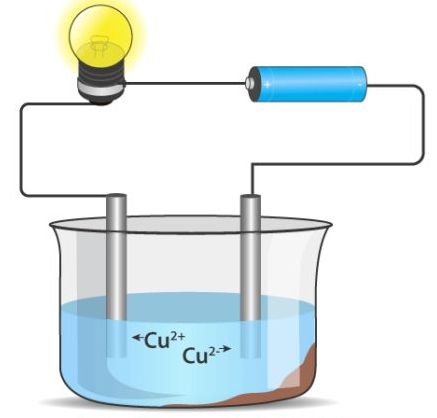
Melting and Boiling Points of Ionic Compounds
In ionic compounds, the strong electrostatic forces between ions require a high amount of energy to break. Thus, the melting point and boiling point of an ionic compound are usually very high.
Solubility of Ionic Compounds
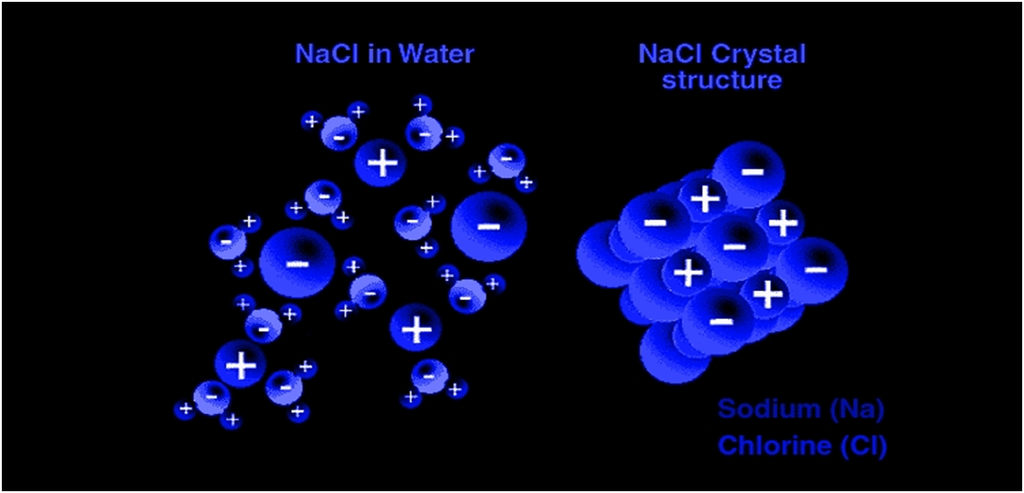
Most ionic compounds are soluble in water due to the separation of ions by water. This occurs due to the polar nature of water.
For example, NaCl is a 3-D salt crystal composed of Na+ and Cl− ions bound together through electrostatic forces of attractions. When a crystal of NaCl comes into contact with water, the partial positively charged ends of water molecules interact with the Cl− ions, while the negatively charged end of the water molecules interacts with the Na+ ions. This ion-dipole interaction between ions and water molecules assist in the breaking of the strong electrostatic forces of attractions within the crystal and ultimately in the solubility of the crystal.
.Properties of Ionic compound
- Ionic compounds are solid. Ionic bond has a greater force of attraction because of which ions attract each other strongly. This makes ionic compounds solid.
- Ionic compounds are brittle.
- Ionic compounds have high melting and boiling points because force of attraction between ions of ionic compounds is very strong.
- Ionic compounds generally dissolve in water.
- Ionic compounds are generally insoluble in organic solvents; like kerosene, petrol, etc.
- Ionic compounds do not conduct electricity in the solid state.
4. Occurence of Metals
- Books Name
- Chemistry Class 10 NCERT based
- Publication
- Grow Career Publication
- Course
- CBSE Class 10
- Subject
- Chemistry
Occurrence of Metals
Most of the elements, especially metals occur in nature in the combined state with other elements. All these compounds of metals are known as minerals. But out of them, only a few are viable sources of that metal. Such sources are called ores.
Au, Pt – exist in the native or free state.
Extraction of Metals
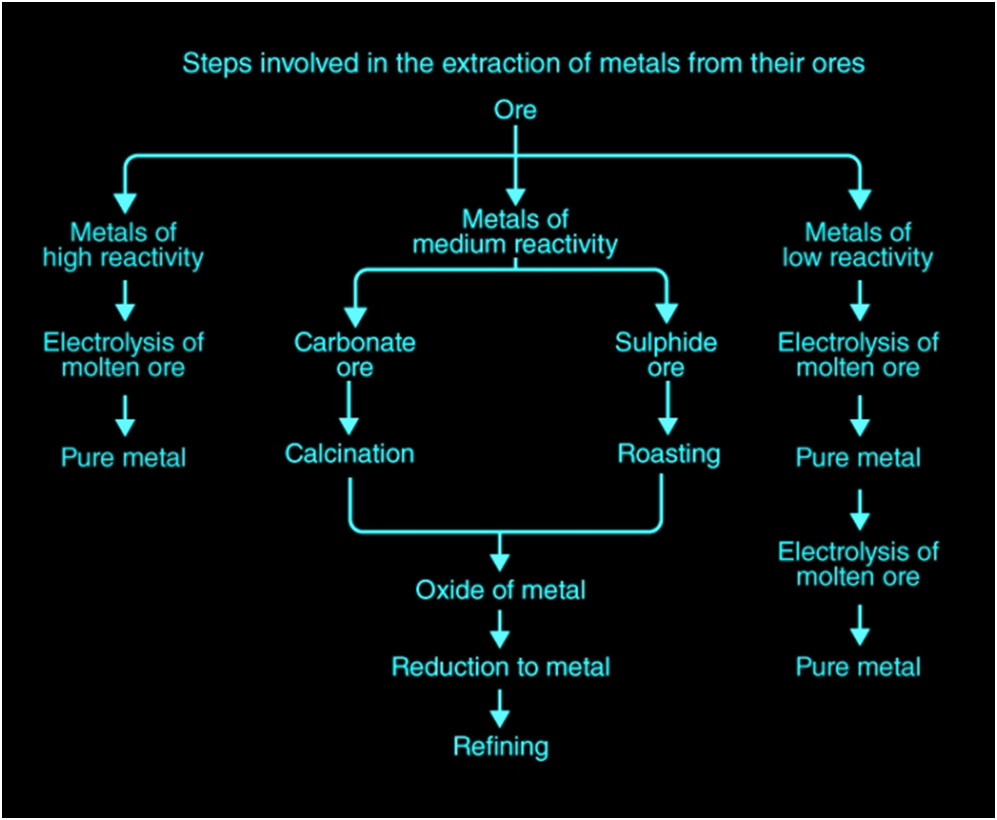
Metals of high reactivity – Na, K, Mg, Al.
Metals of medium reactivity – Fe, Zn, Pb, Sn.
Metals of low reactivity – Cu, Ag, Hg
Roasting
Converts sulphide ores into oxides on heating strongly in the presence of excess air.
It also removes volatile impurities.
2ZnS(s)+3O2(g)+Heat→2ZnO(s)+2SO2(g)
Calcination
Converts carbonate and hydrated ores into oxides on heating strongly in the presence of limited air. It also removes volatile impurities.
ZnCO3(s)+heat→ZnO(s)+CO2(g)
CaCO3(s)+heat→CaO(s)+CO2(g)
2Fe2O3.3H2O(s)+heat→2Fe2O3(s)+3H2O(l)
Extracting Metals Low in Reactivity Series
By self-reduction- when the sulphide ores of less electropositive metals like Hg, Pb, Cu etc., are heated in air, a part of the ore gets converted to oxide which then reacts with the remaining sulphide ore to give the crude metal and sulphur dioxide. In this process, no external reducing agent is used.
1. 2HgS(Cinnabar)+3O2(g)+heat→2HgO(crude metal)+2SO2(g)
2HgO(s)+heat→2Hg(l)+O2(g)
2. Cu2S(Copperpyrite)+3O2(g)+heat→2Cu2O(s)+2SO2(g)
2Cu2O(s)+Cu2S(s)+heat→6Cu(crude metal)+SO2(g)
Extracting Metals in the Middle of Reactivity Series
Smelting – it involves heating the roasted or calcined ore (metal oxide) to a high temperature with a suitable reducing agent. The crude metal is obtained in its molten state.
Fe2O3+3C(coke)→2Fe+3CO2
Aluminothermic reaction – also known as the Goldschmidt reaction is a highly exothermic reaction in which metal oxides usually of Fe and Cr are heated to a high temperature with aluminium.
Fe2O3+2Al→Al2O3+2Fe+heat
Cr2O3+2Al→Al2O3+2Cr+heat
Extraction of Metals Towards the Top of the Reactivity Series
Electrolytic reduction:
1. Down’s process: Molten NaCl is electrolysed in a special apparatus.
At the cathode (reduction):
Na+(molten)+e−→Na(s)
Metal is deposited.
At the anode (oxidation):
2Cl−(molten)→Cl2(g)+2e–
Chlorine gas is liberated.
2. Hall’s process: Mixture of molten alumina and a fluoride solvent usually cryolite, (Na3AlF6) is electrolysed.
At the cathode (reduction):
2Al3++6e–→ 2Al(s)
Metal is deposited.
At the anode (oxidation):
6O2– → 3O2(g)+12e–
Oxygen gas is liberated.
Enrichment of Ores
It means the removal of impurities or gangue from ore, through various physical and chemical processes. The technique used for a particular ore depends on the difference in the properties of the ore and the gangue.
Refining of Metals
Refining of metals – removing impurities or gangue from crude metal. It is the last step in metallurgy and is based on the difference between the properties of metal and the gangue.
Electrolytic Refining
Metals like copper, zinc, nickel, silver, tin, gold etc., are refined electrolytically.
Anode: impure or crude metal
Cathode: a thin strip of pure metal
Electrolyte: aqueous solution of metal salt
From anode (oxidation): metal ions are released into the solution
At cathode (reduction): the equivalent amount of metal from solution is deposited
Impurities deposit at the bottom of the anode.
5. Corrosion
- Books Name
- Chemistry Class 10 NCERT based
- Publication
- Grow Career Publication
- Course
- CBSE Class 10
- Subject
- Chemistry
Corrosion
Alloys
Alloys are homogeneous mixtures of metal with other metals or nonmetals. Alloy formation enhances the desirable properties of the material, such as hardness, tensile strength and resistance to corrosion.
Examples of a few alloys:
Brass: copper and zinc
Bronze: copper and tin
Solder: lead and tin
Amalgam: mercury and other metal
Corrosion
Gradual deterioration of material usually a metal by the action of moisture, air or chemicals in the surrounding environment.
Rusting:
4Fe(s)+3O2(from air)+xH2O(moisture)→2Fe2O3. xH2O(rust)
Corrosion of copper:
Cu(s)+H2O(moisture)+CO2(from air)→CuCO3.Cu(OH)2(green)
Corrosion of silver:
Ag(s)+H2S(from air)→Ag2S(black)+H2(g)
Prevention of Corrosion
Prevention:
1. Coating with paints or oil or grease: Application of paint or oil or grease on metal surfaces keep out air and moisture.
2. Alloying: Alloyed metal is more resistant to corrosion. Example: stainless steel.
3. Galvanization: This is a process of coating molten zinc on iron articles. Zinc forms a protective layer and prevents corrosion.
4. Electroplating: It is a method of coating one metal with another by the use of electric current. This method not only lends protection but also enhances the metallic appearance.
2. Nature of Carbon Compounds
- Books Name
- Chemistry Class 10 NCERT based
- Publication
- Grow Career Publication
- Course
- CBSE Class 10
- Subject
- Chemistry
Physical Properties of Organic Compounds
Most of the organic compounds have low boiling and melting point, due to the weak force of attraction (i.e., the inter-molecular force of attraction) between these molecules. Most carbon compounds are poor conductors of electricity, due to the absence of free electrons and free ions.
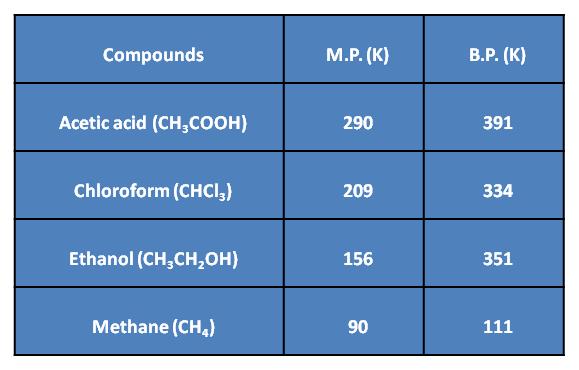
Chains, Branches and Rings
Saturated and Unsaturated Hydrocarbons
Saturated hydrocarbons: These hydrocarbons have all carbon-carbon single bonds. These are known as alkanes. General formula = CnH2n+2 where n = 1, 2, 3, 4.…..
Unsaturated hydrocarbons: These hydrocarbons have at least one carbon-carbon double or triple bond.
Hydrocarbons with at least one carbon-carbon double bond are called alkenes. General formula = CnH2n where n = 2, 3, 4…..
Hydrocarbons with at least one carbon-carbon triple bond are called alkynes. General formula = CnH2n−2 where n = 2, 3, 4…..
Chains, Rings and Branches
Carbon chains may be in the form of straight chains, branched chains or rings.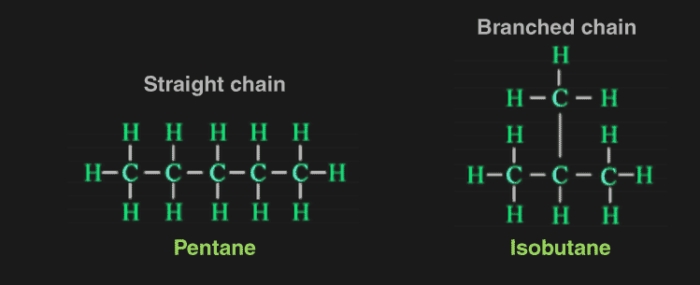
In cyclic compounds,
Structural Isomers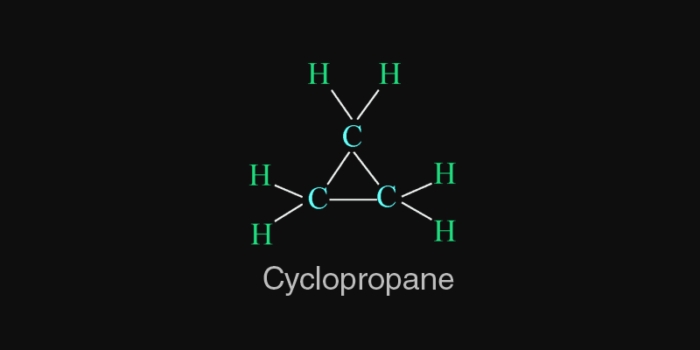
The compounds with the same molecular formula and different physical or chemical properties are known as isomers and the phenomenon is known as isomerism.
The isomers that differ in the structural arrangement of atoms in their molecules are called structural isomers and the phenomenon is known as structural isomerism.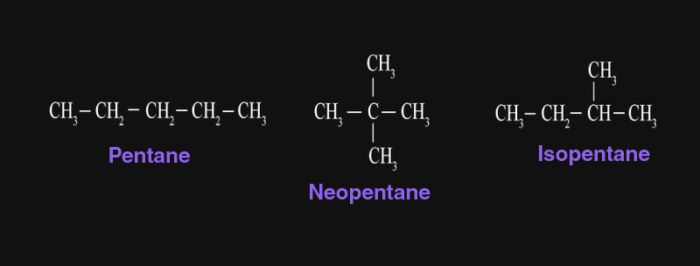
Benzene
Benzene is the simplest organic, aromatic hydrocarbon.
Physical properties: colourless liquid, pungent odour, flammable, volatile.
Structure:
Cyclic in nature with chemical formula, C6H6, i.e., each carbon atom in benzene is arranged in a six-membered ring and is bonded to only one hydrogen atom.
It includes 3-double bonds which are separated by a single bond.
Hence, this arrangement is recognized to have conjugated double bonds and two stable resonance structures exist for the ring.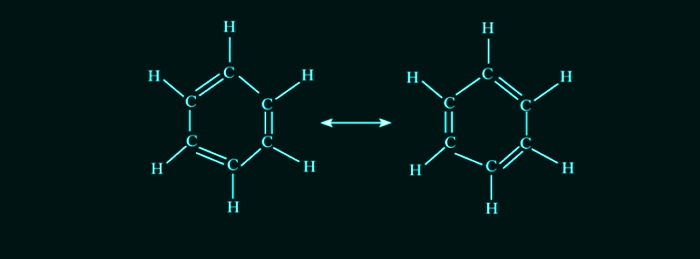
Functional Groups and Nomenclature
Functional Groups
An atom or a group of atoms which when present in a compound gives specific physical and chemical properties to it regardless of the length and nature of the carbon chain is called a functional group.
Classification of Functional Groups
Main Functional Groups:
(i) Hydroxyl group (-OH): All organic compounds containing -OH group are known as alcohols. For example, Methanol (CH3OH), Ethanol (CH3−CH2−OH), etc.
(ii) Aldehyde group (-CHO): All organic compounds containing -CHO group are known as aldehydes. For example, Methanal (HCHO), Ethanal (CH3CHO), etc.
(iii) Ketone group (-C=O): All organic compounds containing (-C=O) group flanked by two alkyl groups are known as ketones. For example, Propanone (CH3COCH3), Butanone (CH3COCH2CH3), etc.
(iv) Carboxyl group (-COOH): All organic acids contain a carboxyl group (-COOH). Hence, they are also called carboxylic acids.
For example, Ethanoic acid (CH3COOH), Propanoic acid (CH3CH2COOH), etc.
(v) Halogen group (F, CI, Br, I): The alkanes in which one or more than one hydrogen atom is substituted by- X (F, CI, Br or I) are known as haloalkanes. For example, Chloromethane (CH3Cl), Bromomethane (CH3Br), etc.
Homologous Series
Homologous series constitutes organic compounds with the same general formula, similar chemical characteristics but different physical properties. The adjacent members differ in their molecular formula by −CH2.
Physical Properties
The members of any particular family have almost identical chemical properties due to the same functional group. Their physical properties such as melting point, boiling point, density, etc., show a regular gradation with the increase in the molecular mass.
3. Chemical Properties of Carbon Compounds
- Books Name
- Chemistry Class 10 NCERT based
- Publication
- Grow Career Publication
- Course
- CBSE Class 10
- Subject
- Chemistry
Chemical Properties
Combustion Reactions
Combustion means burning of carbon or carbon-containing compounds in the presence of air or oxygen to produce carbon dioxide, heat and light.
Flame Characteristics
Saturated hydrocarbons give clean flame while unsaturated hydrocarbons give smoky flame. In the presence of limited oxygen, even saturated hydrocarbons give smoky flame.
Oxidation
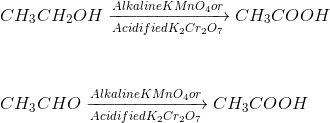
Addition
The reactions in which two molecules react to form a single product having all the atoms of the combining molecules are called addition reactions.
The hydrogenation reaction is an example of the addition reaction. In this reaction, hydrogen is added to a double bond or a triple bond in the presence of a catalyst like nickel, palladium or platinum.
![]()
Substitution
The reaction in which an atom or group of atoms in a molecule is replaced or substituted by different atoms or group of atoms is called substitution reaction. In alkanes, hydrogen atoms are replaced by other elements.
CH4+Cl2+Sunlight → CH3Cl+HCl
4. Carbon Compounds- Ethanol and Ethanoic Acid
- Books Name
- Chemistry Class 10 NCERT based
- Publication
- Grow Career Publication
- Course
- CBSE Class 10
- Subject
- Chemistry
Ethanol and Ethanoic Acid
Ethanol
(i) Ethanol, C2H5OH is a colourless liquid having a pleasant smell.
(ii) It boils at 351 K.
(iii) It is miscible with water in all proportions.
Uses:
1. As a solvent in the manufacture of paints, dyes, medicines, soaps and synthetic rubber.
2. As a solvent to prepare the tincture of iodine.
How Do Alcohols Affect Human Beings?
(i) It causes addiction, damages the liver if taken in excess.
(ii) High consumption of ethanol may even cause death.
Reactions of Ethanol with Sodium
Ethanol reacts with sodium to produce hydrogen gas and sodium ethoxide. This reaction supports the acidic character of ethanol.
2C2H5OH+2Na → 2C2H5ONa+H2(↑)
Elimination Reaction
An elimination reaction is a type of reaction in which two substituents are removed from a molecule. These reactions play an important role in the preparation of alkenes.
Dehydration Reaction
Ethanol reacts with concentrated sulphuric acid at 443 K to produce ethylene. This reaction is known as dehydration of ethanol because, in this reaction, a water molecule is removed from the ethanol molecule.
CH3CH2OH → CH2=CH2+H2O
(reaction taking place in presence of Conc.H2SO4)
Ethanoic Acid or Acetic Acid
(i) Molecular formula: CH3COOH
(ii) It dissolves in water, alcohol and ether.
Esterification
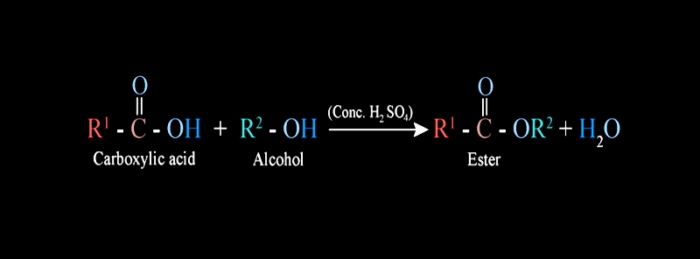
SaponificationWhen a carboxylic acid is refluxed with alcohol in the presence of a small quantity of conc.H2SO4, a sweet-smelling ester is formed. This reaction of ester formation is called esterification.
A soap is a sodium or potassium salt of long-chain carboxylic acids (fatty acid). The soap molecule is generally represented as RCOONa, where R = non-ionic hydrocarbon group and −COO−Na+ ionic group. 
Reaction of Ethanoic Acid with Metals and Bases
Ethanoic acid (Acetic acid) reacts with metals like sodium, zinc and magnesium to liberate hydrogen gas.
2CH3COOH+2Na→2CH3COONa+H2(↑)
It reacts with a solution of sodium hydroxide to form sodium ethanoate and water.
CH3COOH+NaOH→CH3COONa+H2O
Carboxylic acids react with carbonates and bicarbonates with the evolution of CO2 gas. For example, when ethanoic acid (acetic acid) reacts with sodium carbonate and sodium bicarbonate, CO2 gas is evolved.
2CH3COOH+Na2CO3→2CH3COONa+H2O+CO2
CH3COOH+NaHCO3→CH3COONa+H2O+CO2
Friendly Carbon
Why Carbon Can Form so Many Compounds
Catenation occurs most readily with carbon due to its small size, electronic configuration and unique strength of carbon-carbon bonds. Tetravalency, catenation and tendency to form multiple bonds with other atoms account for the formation of innumerable carbon compounds.
Catenation
Catenation is the self-linking property of an element by which an atom forms covalent bonds with the other atoms of the same element to form straight or branched chains and rings of different sizes. It is shown by carbon, sulphur and silicon.
S8
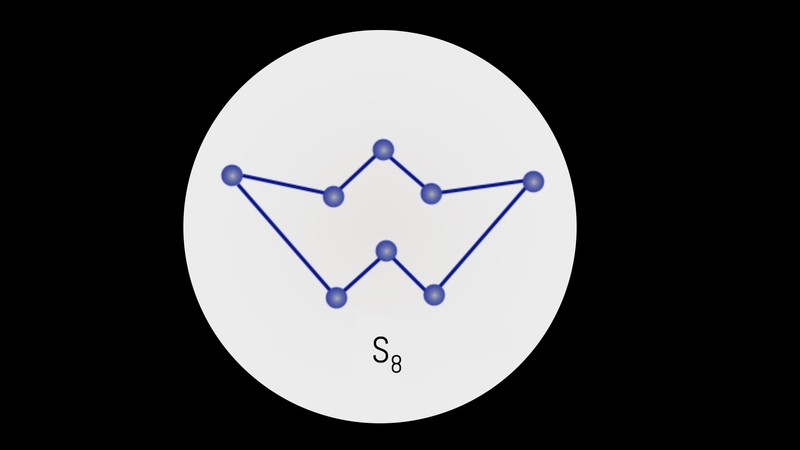
In its native state, sulphur show catenation up to 8 atoms in the form of S8 molecule. It
5. Soaps and Detergents
- Books Name
- Chemistry Class 10 NCERT based
- Publication
- Grow Career Publication
- Course
- CBSE Class 10
- Subject
- Chemistry
Soaps and Detergents
Cleansing Action of Soap
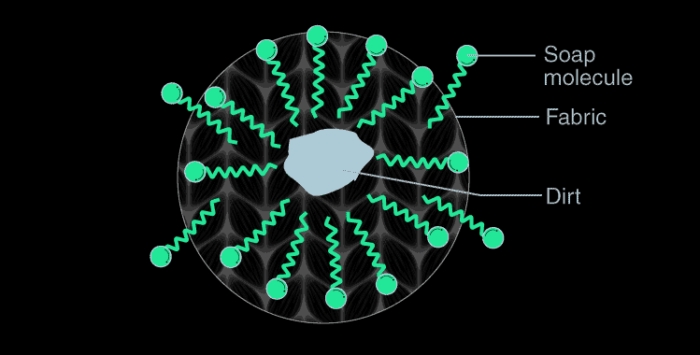
When soap is added to water, the soap molecules uniquely orient themselves to form spherical shape micelles.
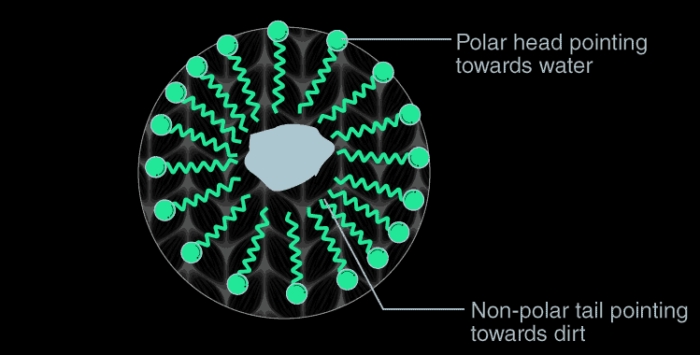
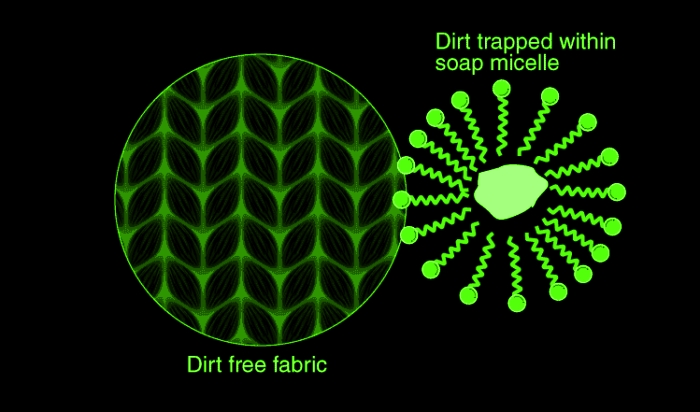
2. Mendeleev's Periodic Table
- Books Name
- Chemistry Class 10 NCERT based
- Publication
- Grow Career Publication
- Course
- CBSE Class 10
- Subject
- Chemistry
Mendeleev’s Periodic Table and Law
The physical and chemical properties of elements are periodic functions of their atomic weights.
Features of Mendeleev’s Periodic Table
● Twelve horizontal rows, which were condensed to 7, known as periods.
● Eight vertical columns known as groups.
● Groups I to VII subdivided into A and B subgroups.
● Group VIII doesn’t have any subgroups and contains three elements in each row.
● Elements in the same group exhibit similar properties.
Achievements of Mendeleev’s Periodic Table
1. A systematic study of elements: Elements with similar properties were grouped together, that made the study of their chemical and physical properties easier.
2. Correction of atomic masses: Placement of elements in Mendeleev’s periodic table helped in correcting the atomic masses of certain elements. For example, the atomic mass of beryllium was corrected from 13.5 to 9. Similarly, atomic masses of indium, gold, platinum etc., were also corrected.
Limitations of Mendeleev’s Periodic Table
1. Position of hydrogen: Hydrogen resembles both, the alkali metals (IA) and the halogens (VIIA) in properties, so, Mendeleev could not justify its position.
2. Position of isotopes: Atomic weight of isotopes differ, but, they were not placed in different positions in Mendeleev’s periodic table.
3. Anomalous pairs of elements: Cobalt (Co) has higher atomic weights but was placed before Nickel (Ni) in the periodic table.
4. Placement of like elements in different groups: Platinum (Pt) and Gold (Au) have similar properties but were placed in different groups.
5. Cause of periodicity: He could not explain the cause of periodicity among the elements.
Periodicity of Properties: The repetition of properties of elements after certain regular intervals is known as Periodicity of Properties.
Merits of Mendeleev’s Periodic Table
1.Mendeleev’s left vacant places in his table which provided an idea for the discovery of new elements. Example: Eka-boron, Eka-aluminium and Eka-silicon.
2.Mendeleev’s periodic table was predicted properties of several undiscovered elements on the basis of their position in Mendeleev’s periodic table.
3.It is useful in correcting the doubtful atomic masses of some elements.
4.Noble gases could accommodate in the Mendeleev’s periodic table without disturbing the periodic table after discovery.
Limitations of Mendeleev’s Periodic Table
(a) No fixed position for hydrogen: No correct position of the hydrogen atom was in Mendeleev’s periodic table.
Example: Position of hydrogen with alkali metals and halogens (17th group).
(b) No place for isotopes: Position of isotopes were not decided.
Example: Cl-35 and Cl-37.
(c) No regular trend in atomic mass: Position of some elements with lower atomic masses before with higher atomic mass.
Example: Ni-58.7 before Co-58.9.
Mendeleev’s original periodic table is reproduced in the table below
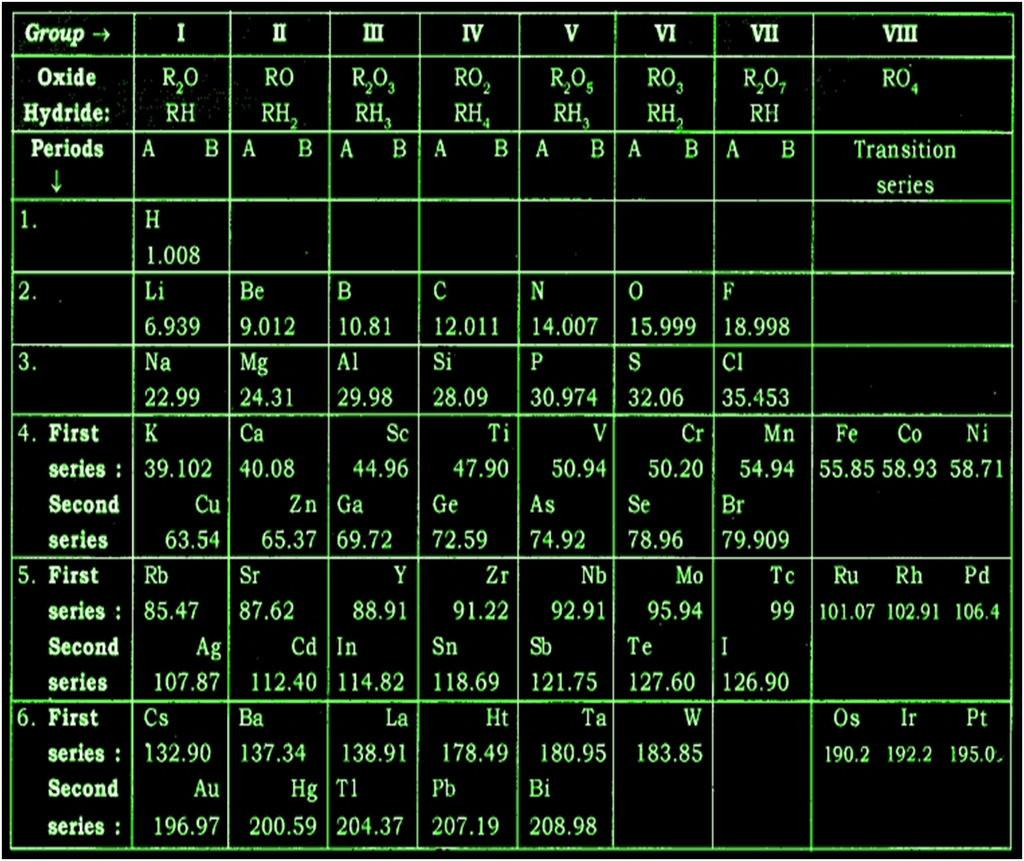
3. Modern Periodic Table
- Books Name
- Chemistry Class 10 NCERT based
- Publication
- Grow Career Publication
- Course
- CBSE Class 10
- Subject
- Chemistry
The Modern Periodic Table: In 1913, Henry Moseley showed that the atomic number of an element is a more fundamental property than its atomic mass.
Modern Period Law: The physical and chemical properties of elements are the periodic function of their atomic number.
Modern periodic table is based on atomic number of elements. Atomic number (Z) is equal to the number of protons present in the nucleus of an atom of an element. Modern periodic table contains 18 vertical column known as group and seven horizontal rows known as periods. On moving from left to right in a period, the number of valence electrons increases from 1 to 8 in the elements present. On moving from left to right in a period, number of shell remains same. All the elements of a group of the periodic table have the same number of valence electrons.
Trends in Modern Periodic Table: Valency, Atomic size, metallic and non-metallic characters, and Electronegativity.
(i) Valency: The valency of an element is determined by the number of valence electrons present in the outermost shell of its atom (i.e. the combining capacity of an element is known as its valency).
In Period: On moving from left to right in a period, the valency first increases from 1 to 4 and then decreases to zero (0).

Example: Valency of first group elements = 1 Valency of second group elements = 2.
(ii) Atomic size: Atomic size refers to radius of an atom. It is a distance between the centre of the nucleus and the outermost shell of an isolated atom.
In Period : On moving from left to right in a period, atomic size decreases because nuclear charge increases.
Example: Size of second period elements: Li > Be > B > C > N > O > F
Point to know: The atomic size of noble gases in corresponding period is largest
due to presence of fully filled electronic configuration (i.e. complete octet).
In Group: Atomic size increases down the group because new shells are being
added in spite of the increase in nuclear charge.
Example ; Atomic size of first group element : Li < Na < K < Rb < Cs < Fr
Atomic size of 17th group elements : F < Cl < Br < I
(iii) Metallic character: It is the tendency of an atom to lose electrons. In Period: Along the period from left to right, metallic characters decreases because a tendency to lose electron decreases due to the increase in nuclear charge. Example: Metallic character of second period elements: Li > Be > B > C >> N > O > F
In Group: Metallic character, when moving from top to bottom increases because the atomic size and tendency to lose electrons increases.
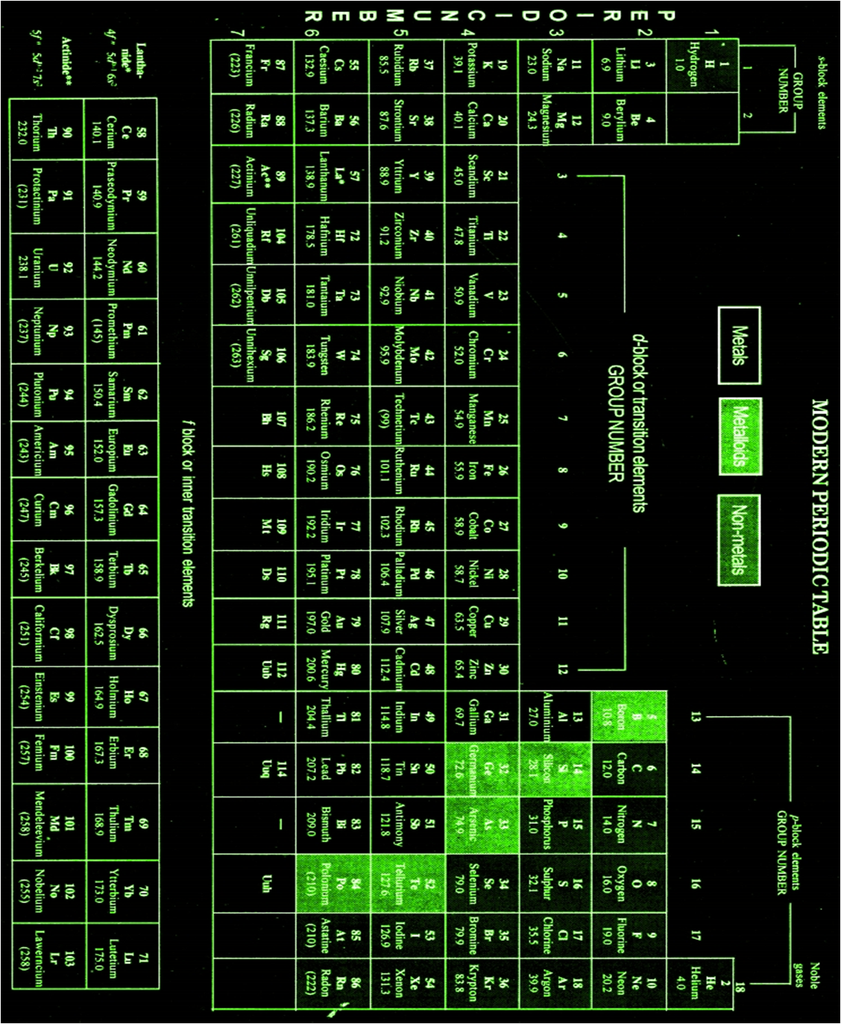
17th group elements: F < Cl < Br < I
(iv) Non-metallic character: It is tendency of an atom to gain electrons.
In Period: Along the period from left to right, non-metallic character increases because tendency to gain electrons increases due to increase in nucleus charge. Example ; Non-metallic character of 2nd period elements : Li < Be < B < C < N < O < F In Group: On moving from top to bottom in a group, non-metallic character decreases because atomic size increases and tendency to gain electrons decreases. Ex. Non-metallic character of 17th period element: F > Cl > Br > I
(v) Chemical Reactivity
In metals: Chemical reactivity of metals increases down the group because tendency to lose electrons increases. Example ; Li < Na < K < Rb < Cs (1st group) In non-metals: Chemical reactivity of non-metals decreases down the group because tendency to gain electrons decreases. Example: F > Cl > Br > I (17th group)
Period: The horizontal rows in the Modern Periodic Table and Mendeleev’s Periodic Table are called periods.
There are 18 groups and 7 (seven) periods in the Modern Periodic Table.
Atomic size: The atomic size may be visualised as the distance between the centre of the nucleus and the outermost shell of an isolated atom.
The trend of atomic size (radius) in moving down a group: Ongoing down in a group of the Periodic Table, the atomic size increases because a new shell of electrons is added to the atoms at every step. There is an increase in distance between the outermost shell electrons and the nucleus of the atom.
The trend of atomic size (radius) in moving from left to right in a period: On moving from left to right along a period, the size of atoms decreases because on moving from left to right, the atomic number of elements increases which means that the number of protons and electrons in the atoms increases. Due to the large positive charge on the nucleus, the electrons are pulled in more closely to the nucleus and the size of the atom decreases.
Characteristics of triads of J.W. Dobereiner.
- Elements of a triad show similar chemical properties.
- These elements of a triad show specific trends in their physical properties.
- The atomic mass of the middle element was roughly the average of the atomic masses of the other two elements.
Example: Atomic mass of Na is 23 in the triad Li, Na and K. This atomic mass is the average of the atomic masses of Li and K which have atomic masses 7 and 39 respectively.
Triads as formed by Dobereiner.
1st Triad
Li – Lithium
Na – Sodium
K – Potassium
2nd Triad
Ca – Calcium
Sr – Strontium
Ba – Barium
3rd Triad
Cl – Chlorine
Br – Bromine
I – Iodine
Mendeleev’s Periodic Law: It states that “the properties of elements are the periodic functions of their atomic masses.” It means the properties of the elements depend on their atomic masses and the elements are given a position in the periodic table on the basis of their increasing atomic masses.
Merits of Mendeleev’s Periodic Table
(i) Mendeleev left a number of gaps in his table to accommodate the new elements which would be discovered later on. So Mendeleev boldly predicted the existence of some more elements. He even predicted the properties of some of these elements and named them as Eka-boron, Eka-aluminium and Eka-silicon respectively. Later on the elements were discovered, for example, gallium replaced Eka-aluminium and it showed properties similar to that of aluminium.
(ii) He gave the proper position to the noble gases which were discovered later on, without disturbing the existing order of elements. He placed them in a new group.
Limitations of Mendeleev’s classification:
- The position of isotopes could not be explained because isotopes have the same chemical properties but different atomic masses. If the elements are arranged according to atomic masses, the isotopes should be placed in different groups of the Periodic Table.
- The atomic masses do not increase in a regular manner in going from one element to the next.
- He could not assign a correct position to hydrogen in his table because hydrogen has some properties similar to alkali metals and some properties similar to halogens.
Modem Periodic Law: This law was proposed by Henry Moseley, a scientist in 1913. According to this Law, “Properties of elements are the periodic function of their atomic number.” It means that the properties of elements depend on their atomic number and the elements are given positions in the periodic table on the basis of their increasing atomic number. As atomic number determines the distribution of electrons in the orbits, and electrons of the outermost orbit determine the properties of an element.
Groups and periods in the Modem (long form) Periodic Table: There are 18 groups (vertical columns) and 7 periods (horizontal lines) in the Modern (or long form) Periodic Table. The number of the period is equal to the number of shells in the atoms of the elements belonging to that period.
Trends in Mendeleev’s Periodic Table
The properties of elements are periodic functions of their atomic mass.
It has 8 groups.
- No place could be assigned to isotopes of an element.
- There were three gaps left by Mendeleev in his Periodic Table.
- No fixed position was given to hydrogen in this Periodic Table.
- No distinction was made between metals and non-metals.
- Transition elements are placed together in Group VIII.
- Inert gases were not known at the time of Mendeleev.
Trends in Modem Periodic Table
(i) Valency: Elements belonging to the same group have the same number of valence electrons and thus the same valency. Valency in a particular period from left to right first increases as positive valency and then decreases as negative valency.
Example: In elements of 2nd period:
Li has 1+ valency, then Be2+, B3+, C4+ covalency, N3- valency, then O2- and F(-) valency.
(ii) The atomic size or atomic radius increases: as we move down in a group and it decreases as we move from left to right in a period. Atomic size increases down a group due to the increase in the number of shells. Atomic size decreases along a period due to an increase in the nuclear charge which tends to pull the electrons closer to the nucleus and reduces the size of the atom.
Non-metallic characters increase from left to right in a period due to increase in the electronegativity and these characters decrease from top to bottom in a group due to the decrease in the electronegativity of atoms while going down in a group.
1. Need for classification of elements:
Increase in the discovery of different elements made it difficult to organise all that was known about the elements. To study a large number of elements with ease, various attempts were made. The attempts resulted in the classification of elements into metals and non-metals.
2. Dobereiner’s triads:
Johann Wolfgang Dobereiner, a German chemist, classified the known elements in groups of three elements on the basis of similarities in their properties. These groups were called triads.
(i) Characteristics of Triads:
Properties of elements in each triad were similar.
Atomic mass of the middle element was roughly the average of the atomic masses of the other two elements.
3. Newlands’ Law of Octaves:
John Newlands’, an English scientist, arranged the known elements in the order of increasing atomic masses and called it the ‘Law of Octaves’. It is known as ‘Newlands’ Law of Octaves’.
(i) Characteristics of Newlands’ Law of Octaves:
It contained the elements from hydrogen to thorium.
Properties of every eighth element were similar to that of the first element.
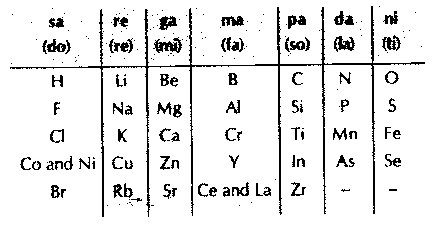
(ii) Table showing Newlands’ Octaves:
(iii) Limitations of Newlands’ law of Octaves:
The law was applicable to elements up to calcium (Ca).
It contained only 56 elements.
In order to fit elements into the table, Newlands’ adjusted two elements like cobalt and nickel in die the same slot and also put some unlike elements under the same note.
4. Mendeleev’s Periodic Table: Dmitri Ivanovich – 5 ’ Mendeleev, a Russian demist, was the most important contributor to the early development of a periodic table of elements wherein the elements were arranged on the basis of their atomic mass and chemical properties.
Characteristics of Mendeleev’s Periodic Table:
- Mendeleev arranged all the 63 known elements in increasing order of their atomic masses.
- Mendeleev’s Periodic Law: The properties of elements are the periodic function of their atomic masses.
Achievements of Mendeleev’s Periodic Table:
Mendeleev adjusted few elements with a slightly greater atomic mass before the elements with slightly lower atomic mass, so that elements with similar properties could be grouped together. For example, aluminium appeared before silicon, cobalt appeared before nickel.
Mendeleev left some gaps in his periodic table.
He predicted the existence of some elements that had not been discovered at that time. His predictions were quite true as elements like scandium, gallium and germanium were discovered later.
The gases like helium, neon and argon, which were discovered later, were placed in a new group without disturbing the existing order.
Limitations:
No fixed positions were given to hydrogen in the Mendeleev’s periodic table.
Positions of Isotopes of all elements was not certain according to Mendeleev’s periodic table.
Atomic masses did not increase in a regular manner in going from one element to the next.
5. Modem Periodic Table: Henry Moseley, gave a new ! property of elements, ‘atomic number’ and this was I adopted as the basis of Modem Periodic Table.
(i) Modem Periodic Law: Properties of elements are a periodic function of i their atomic number.
(ii) The position of elements in Modem Periodic Table:
The modem periodic table consists of 18 groups and 7 periods.
- Elements present in any one group have the same number of valence electrons. Also, the number of shells increases as we go down the group.
- Elements present in any one period, contain the same number of shells. Also, with increase in atomic number by one unit on moving from left to right, the valence shell electrons increases by one unit.
- Each period marks a new electronic shell getting filled.
Trends in the Modern Periodic Table:
Valency: Valency of an element is determined by the number of valence electrons present in the outermost shell of its atom.
Valency of elements in a particular group is same.
Atomic Size: Atomic size refers to the radius of an atom.In a period, atomic size and radii decreases from left to right.In a group, atomic size and radii increases from top to bottom.

 PRIDE LEARNING PUBLICATION
PRIDE LEARNING PUBLICATION
 Grow Career Publication
Grow Career Publication

